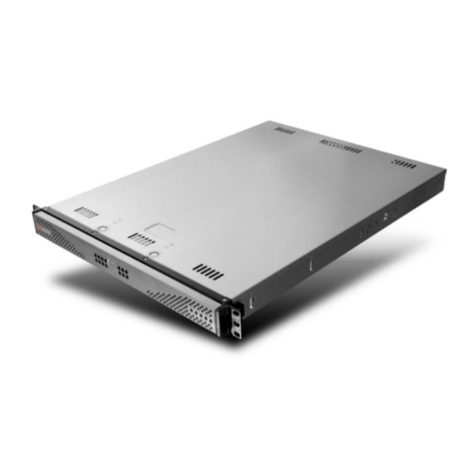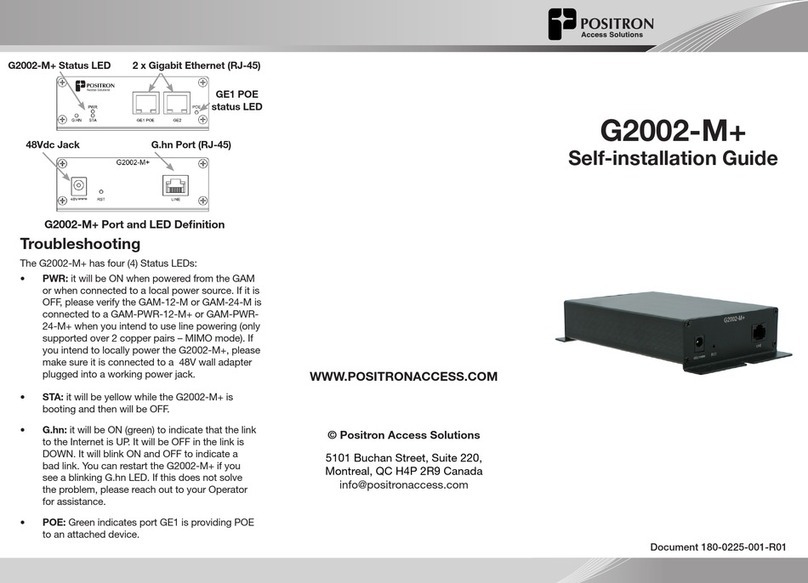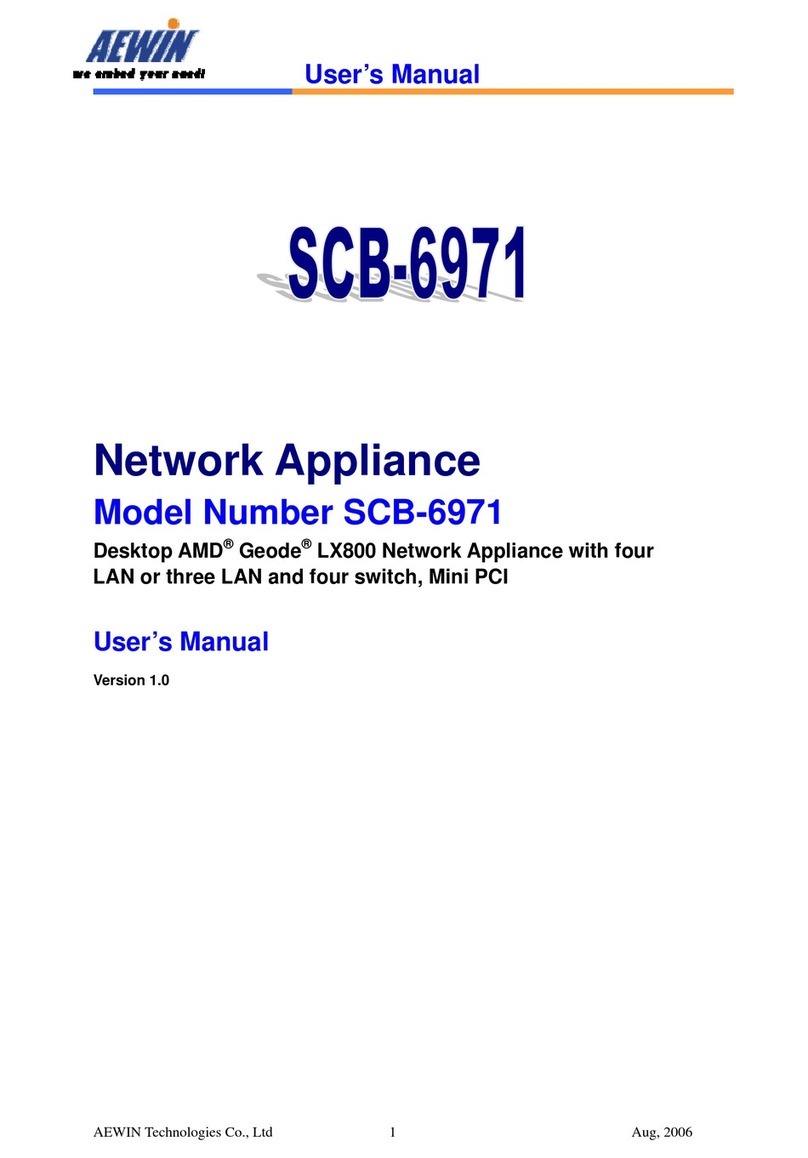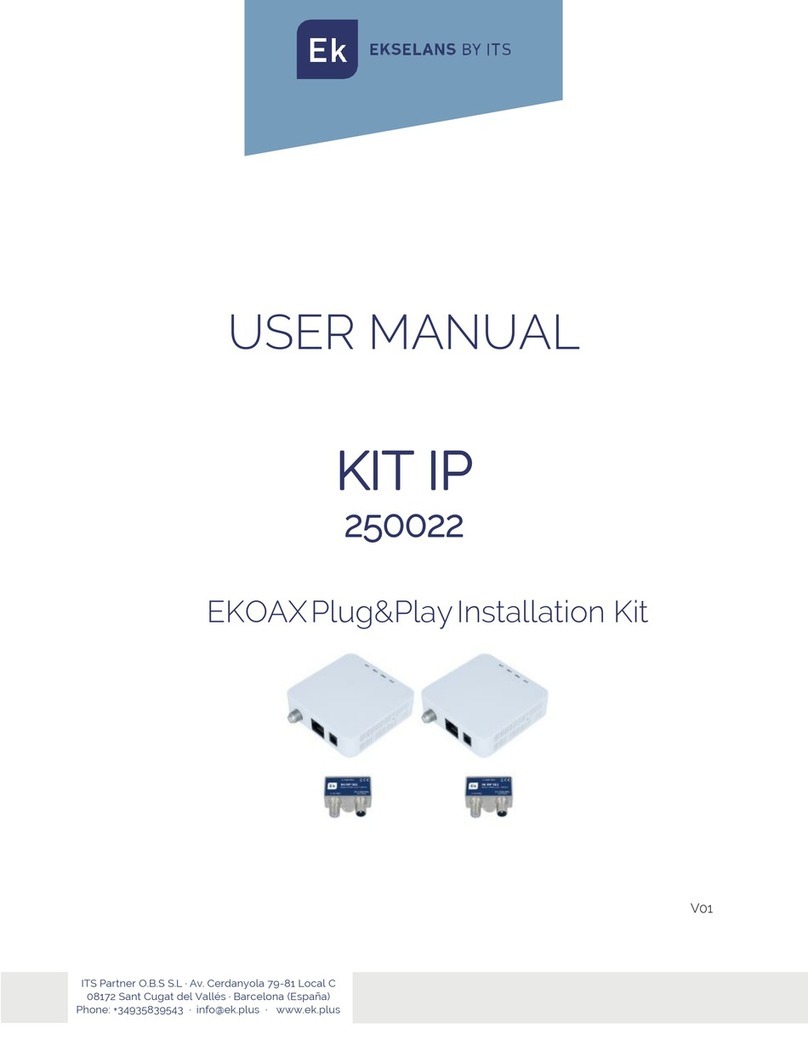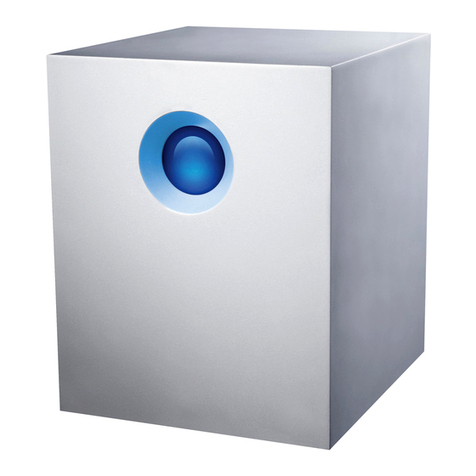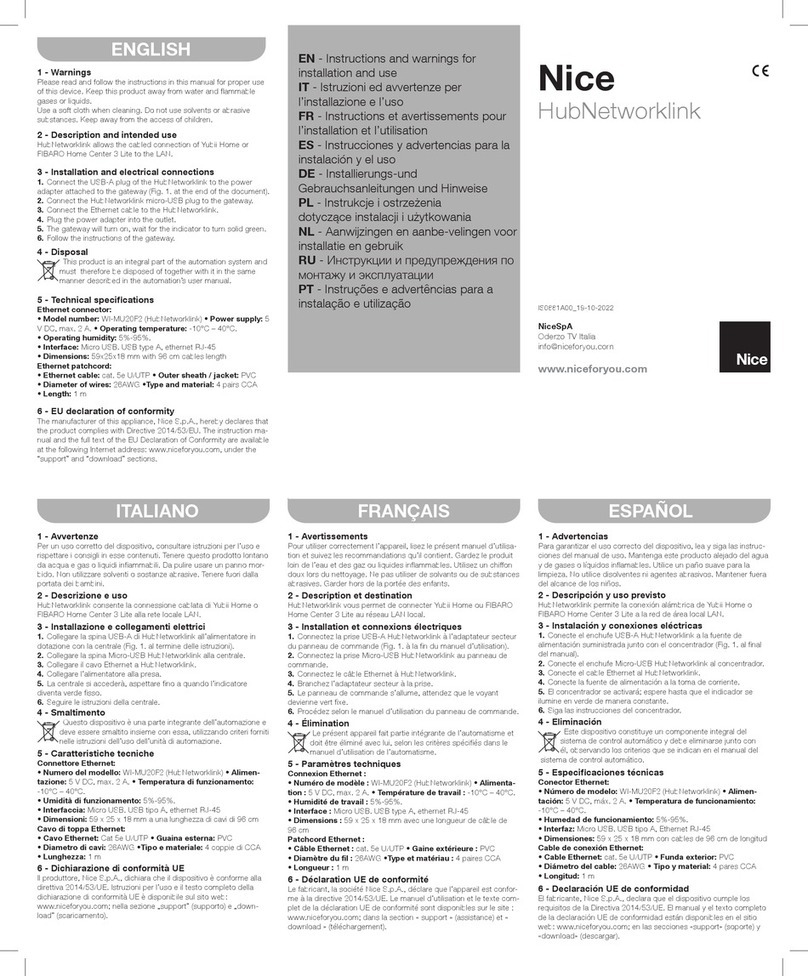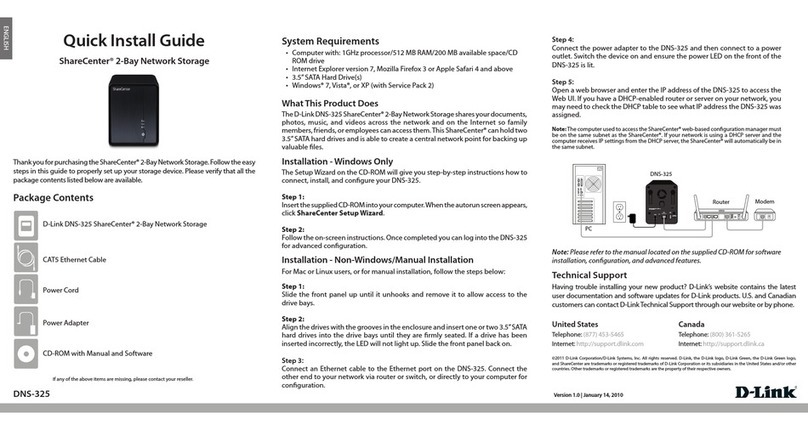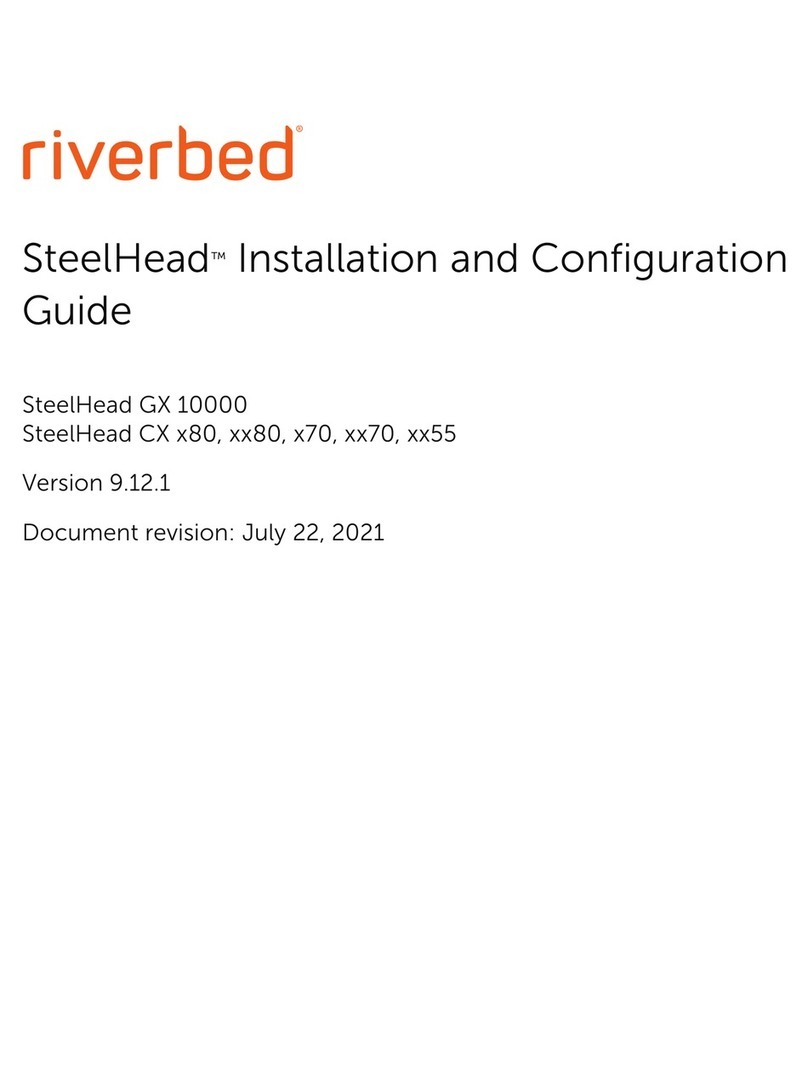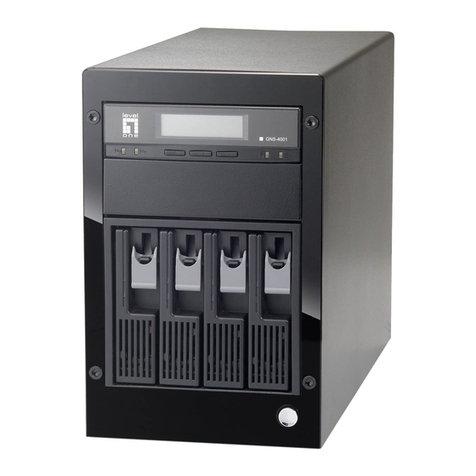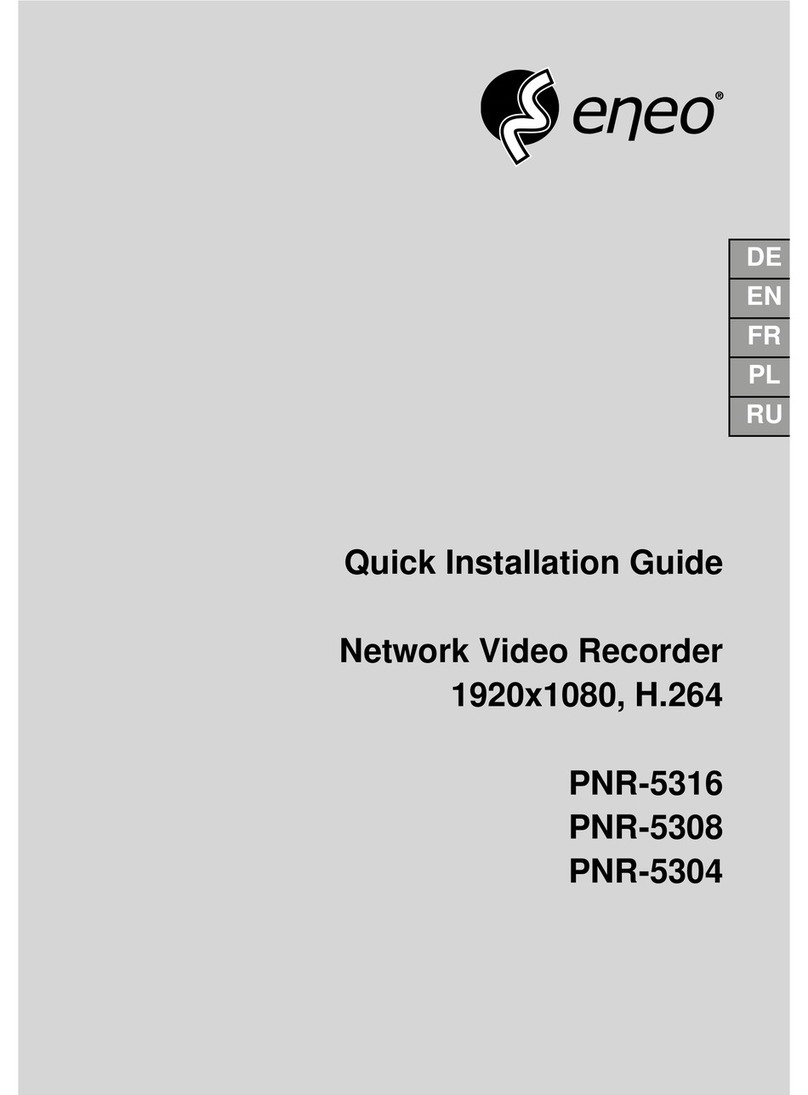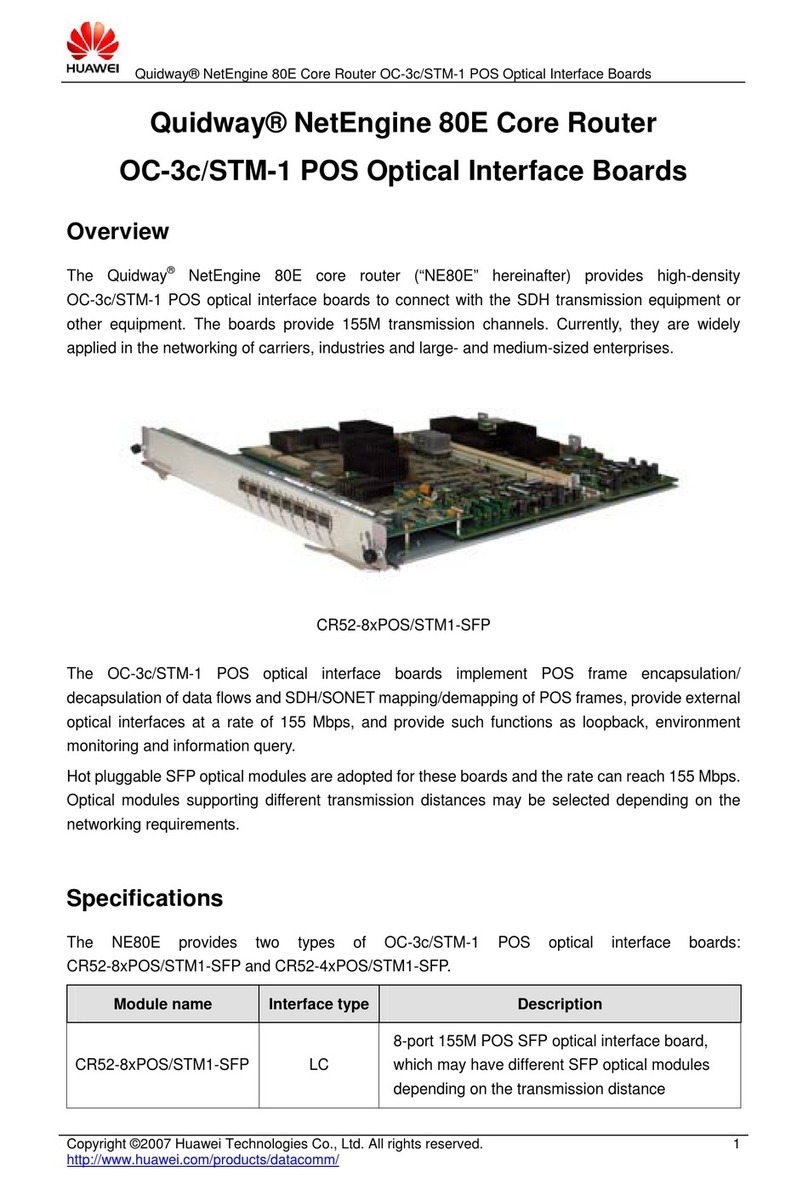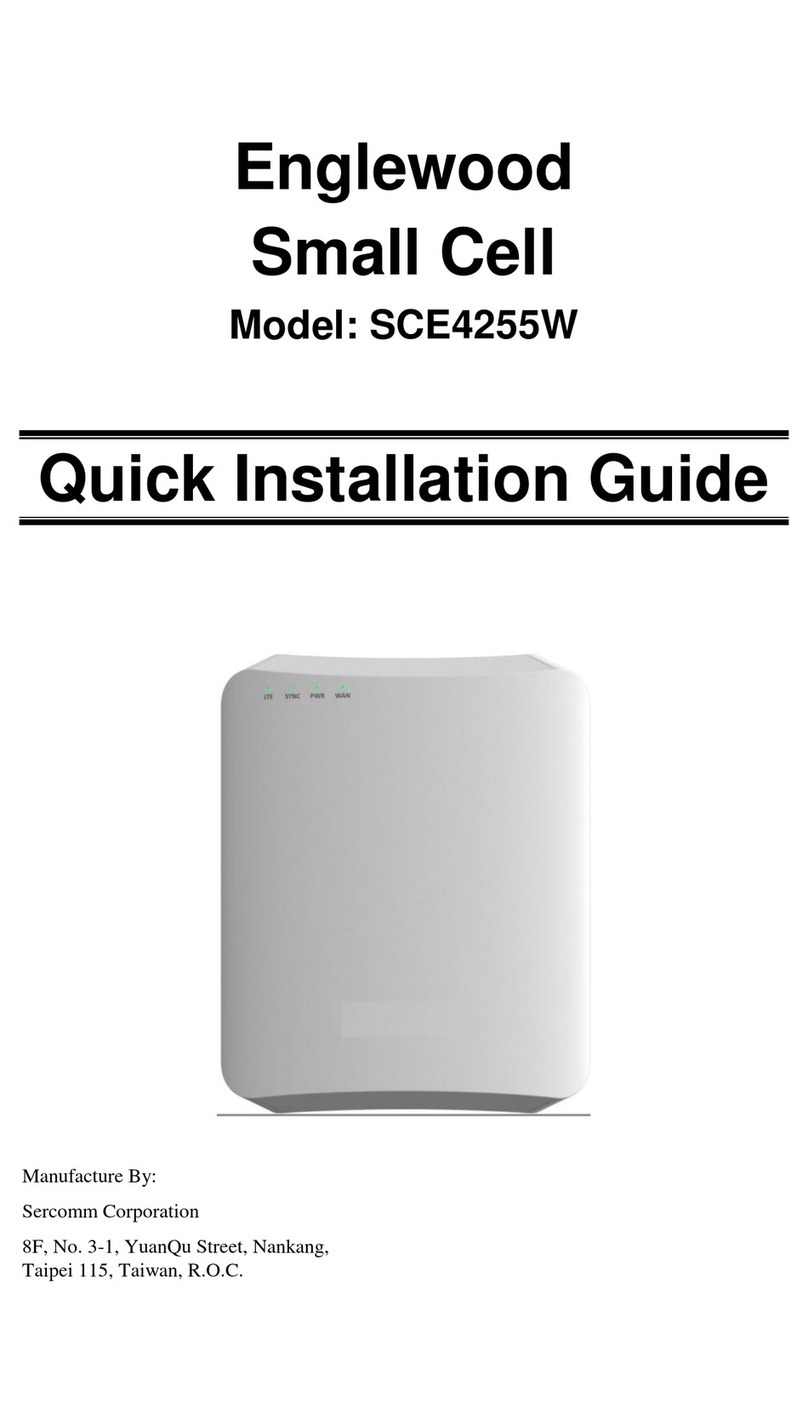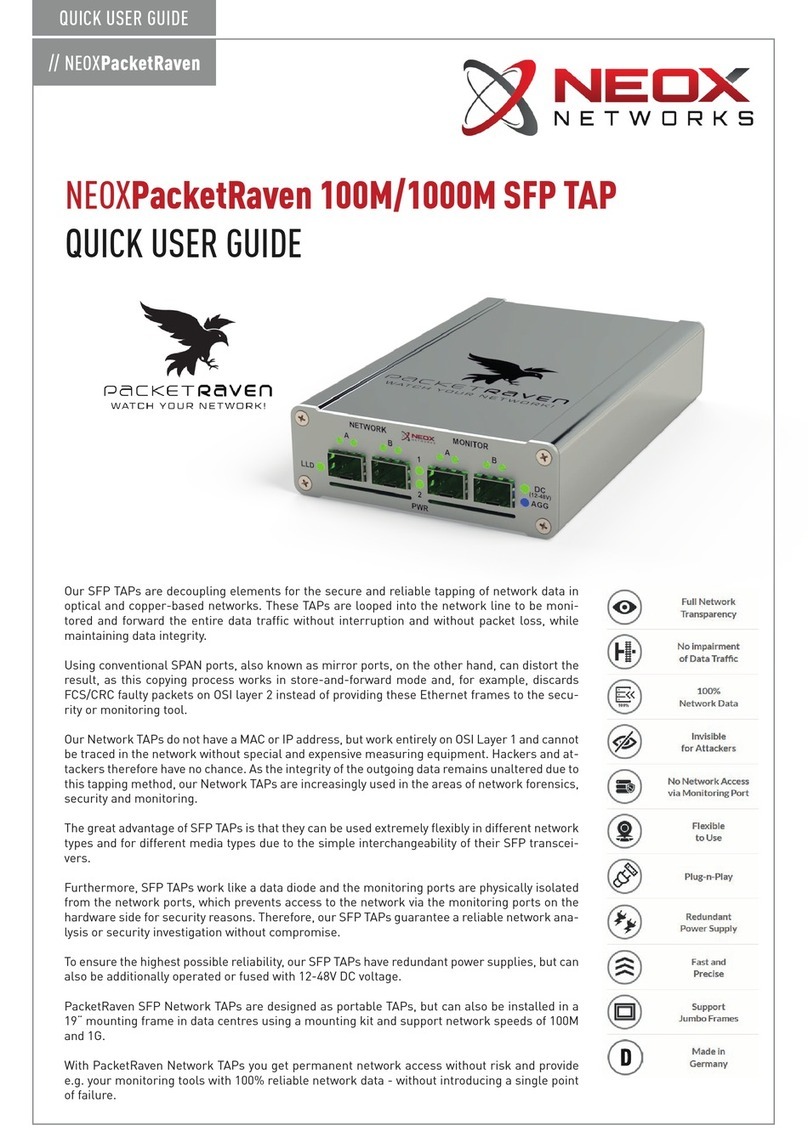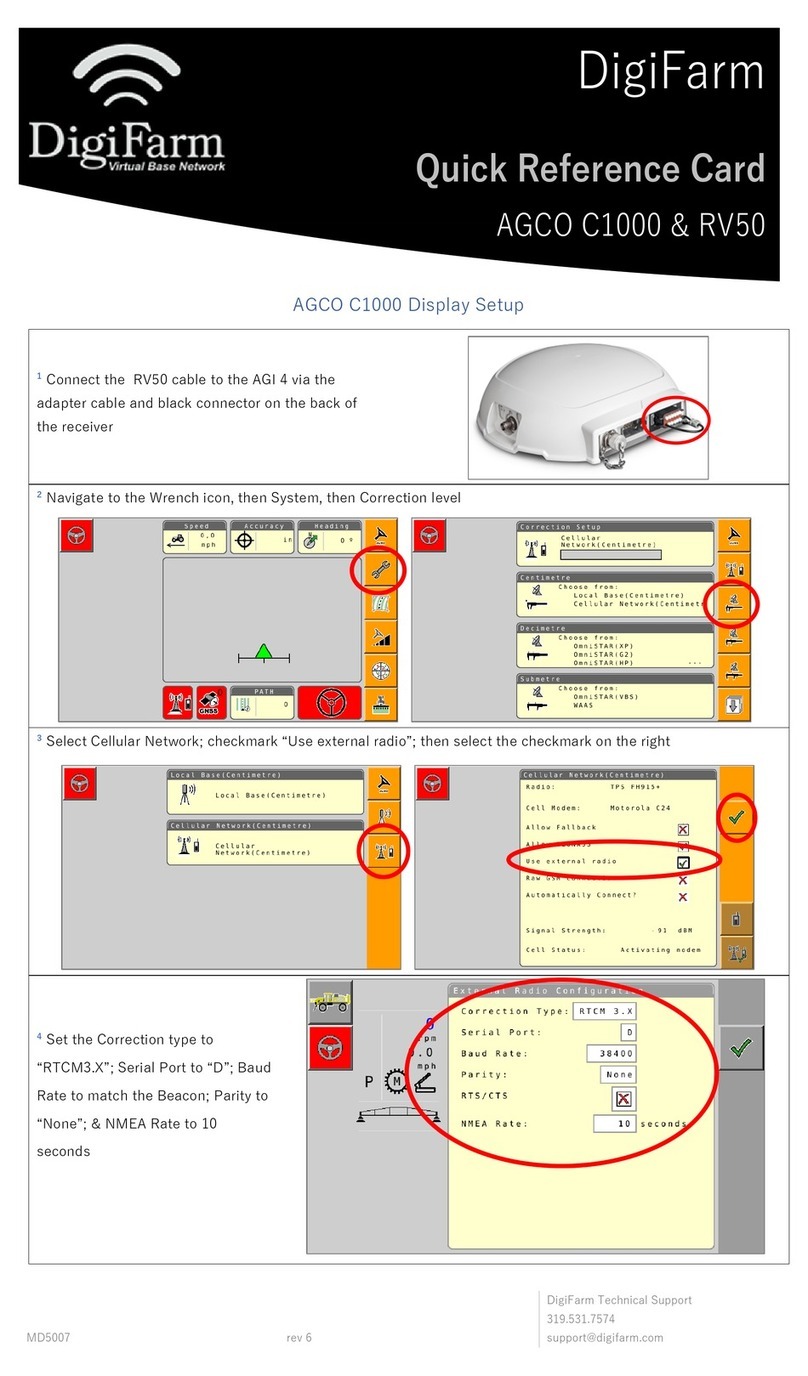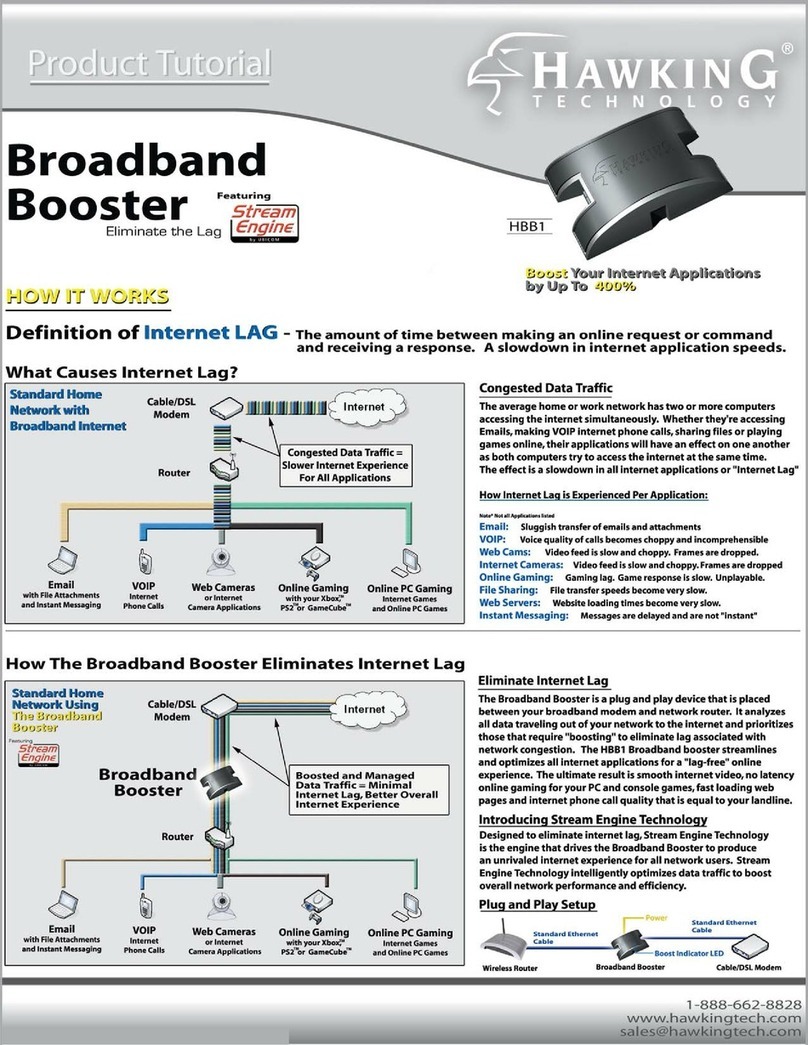Tellabs 6047 User manual

'irtellabs
technical manuai
76-826047A
rev B
practice section
816047/826047
A
©Tellabs, Inc., 2
October
1983
all rights
,~
~
--
..
_~
'1rinted in USA
6047
and
6047
A4Wire-to-4Wire SF-to-E&M
Network
Terminating
Modules
page
1
page
3
page 9
page
14
page
22
page 18
page
19
contents
section 1general
description
section 2
application
section 3installation
section 4
circuit
description
section 5
block
diagram
section
6
specifications
section
7testing
and
troubleshooting
1.01
general
description
1.01
The
6047
4Wire-to--4Wire SF-to-E&M Net-
work
Terminating
Module
with Gain and
the
6047
A
4Wire-to--4Wire SF-to-E&M
Network
Terminating
Module
with Gain and Loopback (figure
1)
each
provide signaling and transmission interface be-
tween a
4wire
facility that uses single-frequency
(SF) signaling and a
4wire
trunk
(typically, aPBX
trunk)
or
a
4wire
line
that
uses E&M signaling. Both
modules provide active level control in
the
transmit
and receive paths, receive-path amplitude equal-
ization, and full-duplex conversion between
the
SF
signaling on
the
facility and the E&M signaling on
the
trunk
or
line. Conventional
2600Hz
SF tone is
supplied
by
an integral oscillator. The
6047
and
6047
Adiffer from ordinary
4wire
E&M SF signaling
sets in
that
they
contain integral amplifiers
to
accommodate avariety of facility interface levels.
Unlike
the
6047,
the
6047
Acontains integral loop-
back
circuitry
that
facilitates local
or
remote testing
of both
the
module and
the
facility.
As
members of
Tellabs'
262U
Universal
Network
Terminating Sys-
tem of modules and enclosures,
the
6047
and
6047A
each fulfill Registered Facility Interface
Codes
TC31
E,
TC31
M,
TC32
E,
TC32
M,
TL31
E,
TL31
M,
TL32E, and TL32M for network-terminating
applications
where
the
serving
telephone
company
uses SF signaling.
1.02
In
the
event
that
this
practice
section
is
re-
issued,
the
reason
for
reissue will be stated in this
paragraph.
1.03 Features and options of
the
6047
and
6047
Ainclude
the
following: full prescription align-
ment capability; balanced, switchable 1200, 600,
or
150-ohm terminating impedances on
the
facility
side; fixed, balanced 600-ohm terminating imped-
ances on
the
terminal side; facility-side amplifiers
and terminal-side attenuators for interface with a
variety
of
levels; active slope-type receive equaliza-
tion; switch-selectable A-side
or
B-side E&M signal-
ing; switch-selectable Type
I,
II,
or
III
E&M
interface;
minimum-break transmit and receive pulse correc-
tion; and an integral sealing-current source. The
6047
Aalone contains
the
aforementioned loop-
back
circuitry
with both local (manual) and remote
(two-tone) loopback-state control. Except for this
difference,
the
two
modules are identical.
page 1
figure
1.
6047 and 6047A 4
Wire-to-4
Wire
SF-to-E&M
Network Terminating Modules
1.04 Prescription-set transmit and receive ampli-
fiers on
the
facility side of
the
6047
and
6047
A
allow each module
to
interface
the
SF signaling
facility directly,
i.e.,
without
aseparate facility-side
line amplifier. These integral amplifiers, in conjunc-
tion with prescription-set transmit and receive
attenuators on
the
terminal side, provide for full
coordination between facility-side and terminal-
side levels. Both facility-side amplifiers on each
module provide from 0
to
24dB
of gain in switch-
selectable
O.ldB
increments, and both terminal-
side
attenuators
provide from 0
to
24dB
of loss in
switch-selectable
0.1
dB
increments.
In
the
receive
channel, input TLP's (transmission level points)
from
-17
to
+7
can be accommodated and
output
TLP's from
+7
to
-17
can be derived.
In
the
transmit channel, input TLP's from
-16
to
+8
can
be accommodated and output TLP's from
+8
to
-16
can be derived. The overload
point
at all
four
ports of the
6047
and
6047
Ais +5dBmO.
1.05
An
active slope equalizer
for
nonloaded
cable in
the
receive channel of
the
6047
and
6047
Apermits from 0
to
7.5dB of equalized gain
to
be introduced at
2804Hz
(re 1004Hz) in switch-
selectable 0.5dB increments. Because this equal-
izer
does
not affect
1004Hz
levels, equalization
can be introduced not only before but also
after
receive-channel levels
are
set, with no
interference
between level and equalization adjustments.
1.06 Transformer coupling is provided at all
four
ports of the
6047
and
6047
AThe
two
facility-side
transformers on each module can be indepen-
dently
switch-optioned for balanced 1200, 600,
or
150-ohm terminating impedance, while
the
two

pair and is deactivated
by
application of asecond
2713Hz tone. With two-tone loopback,
the
6047
A
can be further optioned
for
no timeout,
i.e.,
for loop-
back deactivation
by
application of asecond tone
only,
or
for automatic loopback deactivation
after
a
2.6-minute
or
20.8-minute
timeout
interval
if
no
second tone is applied prior
to
expiration of the
interval. Another loopback-related switch option
conditions
the
6047
A
to
busy
out
the
associated
terminal
equipment
(with A-side signaling and Type
IE&M interface only) during loopback
to
prevent
the
trunk
circuit
or
line circuit from being inadver-
tently
seized. Aprescription loopback-Ievel-control
circuit introduces from 0
to
23dB
of loss
or
gain
into
the
loopback path in switch-selectable incre-
ments
(23dB
loss; 0.5,
1.5,3,
6,
and
12dB
gain)
to
provide
true
equal-level loopback.
practice
section
816047/826047
A
terminal-side transformers each provide fixed, bal-
anced
600-ohm
terminating impedance. All four
transformers on each module are center-tapped
to
derive balanced simplex leads. The 150-ohm facility-
side impedance options provide approximately
2dB
of slope equalization (in the receive channel,
this
is
in addition
to
any provided
by
the
active slope
equalizer) when
the
facility-side ports interface
long sections of nonloaded cable.
1.07
An
integral sealing-current source on each
module can be switch-optioned into
the
circuit for
application of nominal
20mA
sealing
current
to
me-
tallic facility-side pairs Switching
the
internal sealing-
current
source
out
of
the
circuit provides access
to
the
facility-side simplex
leads
These leads can be
used,
for
example,
to
apply sealing
current
to
the
facility-side pairs from asource external
to
the
module.
1.14
Both the 6047 and 6047Acontain an integral
1.08 The transmit portion of
the
6047
and
6047
A
2600Hz
SF signaling
tone
oscillator and
therefore
converts de
input
signals to outgoing SF tone do not require an external (master)
SF
tone source.
signals. Aminimum-break transmit pulse
corrector
Provision for use of master oscillator, however, is
ensures transmission of recognizable tone pulses. available via factory modification.
Atransmission-path-cut circuit with anominal 1.15
In
addition
to
precision facility-gain and ter-
15ms pre-cut delay interval prevents transient minai-loss DIP switches
for
both channels,
the
front
interference
with outgoing signaling tones. panel of each module contains E-Iead and M-Iead
1.09 The receive portion of
the
6047
and
6047A
busy-indicating LED's and seven bantam-type
test
converts incoming SF tone signals
to
de output jacks. Opening jacks facing
the
module are pro-
signals. Aminimum-break receive pulse
corrector
vided at all
four
ports, and monitoring jacks bridg-
ensures transmission of recognizable de pulses. ing
the
transmission pair are provided at
the
two
Recognition delays prevent response
to
spurious input ports. The seventh
jack
is an E&M-Iead break-
SF tone bursts and to momentary tone interruptions. ing (opening) jack. The
front
panel of
the
6047
A
1.10 When
the
6047
or
6047A
is optioned for
A-
also contains aloopback-active LED.
side (conventional terminal-side) E&M signaling, 1.16 Both modules
operate
from filtered, ground-
the
transmit portion of the module converts incom- referenced
-22
to
-56Vdc
input. Maximum current
ing M-Iead states
to
outgoing SF tones, and
the
requirements range from
86mA
at idle
to
95mA
receive portion converts incoming SF tones
to
when busy, with
an
additional
25mA
required when
outgoing E-Iead states. When the module
is
op-
the
internal sealing-current option is selected and,
tioned
for
B-side (also referred to as "facility-side") for
the
6047
Aonly,
another
40mA
required when
E&M signaling,
the
transmit portion converts in- loopback is activated.
coming E-Iead states
to
outgoing SF tones, and
the
1.17 The
6047
and
6047A
are Type
10
modules.
receive portion converts incoming SF tones
to
As such, each module mounts in one position of a
outgoing M-Iead states. Tellabs Type
10
Mounting Shelf, versions of which
1.12
When the
6047
or
6047A
is
optioned for
are
available for relay-rack and apparatus-case
either
A-side
or
B-side
E&M
signaling, it can also be installation.
In
relay-rack applications, up
to
12
optioned
for
Type I(single-lead)
E&M
interface, modules can be mounted across a19-inch rack,
which is often used with electromechanical switch- while up
to
14 modules can be mounted across a
ing systems,
or
for Type
II
(looped-signaling-lead) 23-inch rack. In
either
case, 6inches of vertical
E&M interface, which is often used with electronic rack space is used.
switching systems. With A-side signaling only, the 1.18 Both
the
6047
and
6047A
are
members of
6047
and
6047A
are
compatible with aType III Tellabs'
262U
Universal
Network
Terminating Sys-
(looped) E&M interface when optioned for Type
I.
tern of modules and enclosures. Thus, each module
1.13 Unlike
the
6047,
the
6047A
contains in- can also be mounted in any
of
Tellabs'
prewired
tegral loopback
circuitry
that
loops
4wire
receive
262U
Mounting Assemblies, versions of which
are
input signals back
to
the
4wire
transmit
output
port
available for relay-rack and apparatus-case instal-
for
testing of signaling and transmission within
the
lation. For details, please refer
to
Tellabs'
262U
module and also on
the
facility. Switch options System brochure.
In
addition,
the
6047
and
6047A
allow a
choice
of manual
or
two-tone loopback. can be used in
the
prewired mounting assemblies
Manualloopback
is activated and deactivated via aof Tellabs'
262
Network
Terminating System and
DIP switch on
the
6047's
loopback subassembly.
260A
SF Signaling and Terminating System. For
Two-tone loopback is activated
by
application of details, please refer
to
the
Tellabs
brochures
and
nominal
2713Hz
tone
to
the
4wire
receive input practices on
the
262
and
260A
Systems.
page 2

practice section
816047/826047
A
2.
application
2.01 The
6047
and
6047
A4Wire-to-4Wire SF-to-
E&M
Network
Terminating Modules are each de-
signed
to
interface a
4wire
SF transmission facility
with a
4wire
E&M
trunk
or
line associated with a
two-way dial/supervisory
telephone
circuil. These
modules
combine
the
functions of a
4wire
line
amplifier, an SF transceiver, an SF-to-E&M signal-
ing converter, and a
4wire
pad/transformer mod-
ule. Thus,
the
6047
and
6047
Aare
complete
4wire
E&M
SF
signaling and terminating circuits, less
power
and ringing, on single Type 10 modules.
As
such, each module provides full-duplex signaling
conversion and transmission interface between
the
4wire
SF facility and
the
4wire
E&M
trunk
or
line.
The two modules differ only through the presence
of
loopback
circuitry
on
the
6047
Athat allows test-
ing of both
the
module and
the
facility from alocal
or remote location.
2.02 The
6047
and
6047
Aare well suited to a
variety of 4wire-to-4wire SF-to-E&M applications,
both network-terminating and otherwise.
In
network-
terminating applications where
the
serving tele-
phone company uses SF signaling, each module
fulfills Registered Facility Interface Codes
TC31
E,
TC31M, TC32E, TC32M, TL31E, TL31M, TL32E, and
TL32M. Figures 2through 4
show
three
typical
network-terminating tie-trunk applications of the
6047
and 6047A: short-haul, long-haul involving
analog carrier, and long-haul involving digital car-
rier, respectively.
terminal
interface
2.03 The
6047
and
6047
Ainterfaces
the
local
(terminal-side)
4wire
E&M
trunk
or
line via prescrip-
tion
attenuators
in
the
transmit and receive paths
(see paragraph 2.06) and via transformers at the
transmit input and receive output ports. Both
terminal-side transformers provide fixed, balanced
600-ohm
terminating impedance and are center-
tapped
to
derive balanced simplex leads. Transient
protection is provided at both terminal-side ports.
facility
interface
and
sealing-current
source
2.04 The
6047
and
6047A
interface
the
4wire
facility-side (SF) transmission facility via prescrip-
tion amplifiers
in
the
transmit and receive paths
(see paragraph 2.06) and via transformers at
the
transmit
output
and receive ports. Each of the
two
facility-side transformers provides balanced, inde-
pendently switch-selectable 1200, 600,
or
150-ohm
terminating impedance. The 1200-ohm option is
used for interface with loaded cable;
the
600-ohm
option, for interface with nonloaded cable
or
car-
rier; and
the
150-ohm option,
to
provide approx-
imately
2dB
of slope equalization (in
the
receive
channel,
this
is in addition to any provided
by
the
module's active slope equalizer) for long sections
of nonloaded cable through
the
deliberate imped-
ance mismatch. Both facility-side transformers are
center-tapped
to
derive balanced simplex leads
(see paragraph 2.05).
2.05
An
integral sealing-current source in the
6047
and
6047A
can be switch-optioned into
the
circuit
to
apply approximately
20mA
of sealing
current
to
metallic facility-side
transmit
and receive
pairs. This
current
flows outward from
the
4wire
transmit
output
port (pins
41
and 47) and returns
via
the
4wire
receive input port (pins 7and
13).
When the internal sealing-current source is
switched out of
the
circuit, normal simplex leads
are
derived on
the
facility side. These simplex leads
can be used to provide sealing
current
to
the
facility from asource
external
to
the
module if such
an arrangement is desired.
level
control
2.06 Prescription-set transmit and receive ampli-
fiers on
the
facility side of
the
6047
and
6047A
allow each module to interface
the
SF signaling
facility directly,
i.e.,
without
aseparate facility-side
line amplifier. The module's amplifiers, in conjunc-
tion with
the
prescription-set
transmit
and receive
attenuators on
the
module's terminal side, provide
for full coordination between facility-side and
terminal-side levels (see figure
5).
In
the
receive
channel,
the
facility-side amplifier is set to provide
the
gain necessary
to
derive a
+7
transmission
level point
(TLP)
within
the
module. This internal
TLP is then used as areference as the module's
terminal-side receive
attenuator
is set
to
provide
,TL32M
I
INTERFACE
I
I
11
~
I
!I
/II
IPBX
6047/47A
I
In/I
I
~
II
BlE
ISSION
I
lTV
M E
SBISGI
I
ISGI
SB
E M
i
I
SFCA
TllANSM
FACll
E M
6047/47A
ITL31M
,INTERFACE
figure
2.
Typical short-haul tie-trunk circuit using 6047
or
6047A
page 3
M E
PBX

practice
section
816047/826047
A
ANALOG
CARRIER
TMNS"'SSION
FACILITY
figure
3.
Typical
long-haul
analog
tie-trunk
circuit
using
6047
or
604
7A
1Tl.31
..
I'NTERF"CE
I
DIGITAL
CMAIER
MUUIPLEX
EQUIPMENT
ITL32M
IINTERFACE
I
...
figure
4.
Typicai/ong-haul
digital
tie-trunk
circuit
using
6047
or
604
7A
t(;V
amplifier provides
gain
to
derive internal
+7TlP
from
4wire
rev
input
level
rev
attenuator
provides
loss
to
derive
required
4wire
rev
output
level
from
internal +7TLP
4wire
receive
input
port
o
to
24dB
in +7TLP o
to
24dB
loss
4wire
receive
output
port
receive
path
FACILITY
SIDE
TERMINAL
SIDE
4wire
transmit
output
port
1
f-_.:-~1~6~T~L~P~_....,ro':::"¥dsl
1-----f---
..
---,I
a
to
24dB 0
to
24dB
11-_--<
..
__
+-
......
...
gain loss
transmit
path
xmt
amplifier provides
gain
to
derive required
4wire
xmt
output
level
from
internal-16TLP
l<mt
attenuator
provides
10$s
to
derive internal
-16TLP
from
2wire
input
level
figure
5.
Level coordination
in
6047
and
6047
A
the
loss necessary
to
derive the required terminal-
24dB
of loss in
0.1
dB increments. Thus, receive
side receive
output
ievel.
In
the
transmit channel, input TLP's from
-17
to
+7
can be
accommodated
the
terminal-side
attenuator
is set
to
provide the and receive
output
TLP's from
+7
to
-17
can be
loss necessary to derive a
-16TLP
within
the
mod- derived.
In
asimilar manner,
transmit
input
TLP's
of
ule. This internal TLP is then used as a
reference
-16
to
+8
can be
accommodated
and
transmit
out-
as
the
moduie's facility-side
transmit
amplifier is put TLP's of
+8
to
-16
can be derived. Total
set
to
provide
the
gain necessary
to
derive
the
faciiity-side gain and total terminal-side loss intro-
required facility-side
transmit
output
level. Both duced
into
achannel are
the
respective sums of
facility-side amplifiers in the
6047
and
6047A
pro-
that
channel's front-panel
fac
gain
and
term
loss
vide
from
0
to
24dB
of gain in
O.ldB
increments.
switches
set
to
the
IN position. The overload
point
Both terminal-side
attenuators
provide from 0to
at
all
four
ports
of
the
6047
and
6047
Ais +5dBmO.
page 4

practice section
816047/826047
A
1004
H,
7.5<18
MAXIMUM
figure
6.
Typical response curves
for
receive-channel
active slope equalization
o',dEl
INCF~EIV'U\lS
o
5dH
MINIMUM
2B04lil
3~H.
FHlQUE'IlCY
"
EOLl !6
.,
~dB
oc
~ ~
"
4.,
'C
3 "
;c
2'1
, 0
,;
'0
0;
"'
3 C
t------I"'----
~
~IV()T
POINT
A-side (conventional terminal-side) signaling is
used when
the
associated registered terminai
equipment
provides a
ground
on
the
Elead for call
origination. 60side (sometimes referred to as "facility-
side") signaling is used when
the
associated regis-
tered terminal equipment provides battery on
the
Mlead for call origination. Each of these E&M
signaling modes is described in detail below.
2.10
A-Side
E&M
Signaling.
A-side E&M signal-
ing is used with Registered Facility Interface Codes
TC31M, TL31M, TC32M, and TL32M.
In
typical
A-
side SF-to-E&M signaling applications (with aType
Iinterface),
the
6047
or
6047A
provides an E-Iead
output
that
is open when SF tone is
detected
at
the
receive input
port
and
that
is at circuit
ground
when no
tone
is detected.
In
the
transmit channel,
SF tone is transmitted when
the
Mlead is
either
300H,
receive-channel
amplitude
equalization
2.07 Aprescription active slope-type amplitude
equalizer in
the
6047
and
6047A
provides post-
equalization
of
the
facility-side receive pair. From 0
to
7.5dB
of gain at
2804Hz
(re 1004Hz) can be
introduced
into
either
module's receive path in
switch-seiectable 0.5dB increments to compensate
for
the
frequency
response of nonloaded cable.
Typical flatness achievabie with
the
module's re-
ceive equaiizer is
±0.3dB
from
400
to
3200Hz
re
1004Hz. The module's equalized gain response is
not affected by flat gain and loss adjustments,
which are used
to
provide precise transmission
alignment. Frequency response of
the
equalizer is
shown graphically in figure 6and in tabular form in
table
1.
Note:
Because
introduction
of
equalization into the
receive
channel
of
the
6047
or
6047
Adoes
not
affect 1004Hz levels, equalization can be introduced
not
only
before
but
also
after
transmission levels
are set.
E&M
signaling
interfaces
2.08 The
6047
and
6047A
can each be switch-
optioned
to
derive
either
aType I(single-lead)
or
a
Type
II
or
III (looped-signaling-lead)
E&M
interface.
The conventional Type Iinterface is often used in
electromechanical-switching-system
(e.g.,
SxS) en-
vironments, while
the
newer
Type
II
and
III
inter-
faces are often used
in
electronic-switching-system
environments. The Type Iand Type
II
interfaces can
be used with
either
A-side
or
B-side
E&M
signaling
(see paragraphs 2.09 through 2.13). The Type III
interface can be used with A-side signaling only.
Figure 7shows
the
connections
required
for
Type
I,
II,
and III E&M signaling interfaces.
E&M
signaling
modes
2.09 Both
the
6047
and
6047
Acan be switch-
optioned
for
either
A-side
or
B-side E&M signaling.
receive equalized gain (in dB) introduced at various frequencies
equalizer
switch
setting
(dB)
300Hz 400Hz 500Hz 800Hz
1004Hz
1500Hz 1800Hz 2500Hz 2804Hz
0
0.0 0.0
0.0
0.0 0.0 0.0 0.0 0.0 0.0
0.5
-0.23 -0.19 -0.15 -0.06
0.0 +0.15 +0.24 +0.43 +0.50
1.0
-0.52 -0.42
-0.33 -0.13
0.0 +0.32 +0.52 +0.93 +1.07
1.5
-0.75 -0.60
-0.49
-0.18
0.0 +0.46 +0.74 +1.33 +1.54
2.0
-1.00
-0.80
-0.64 -0.24
0.0 +0.61 +0.98 +1.76 +2.04
2.5
-1.22
-0.98 -0.78
-0.29
0.0 +0.75 +1.20 +2.15 +2.49
3.0
-1.50 -1.20 -0.95
-0.36
0.0 +0.90 +1.45 +2.60 +3.01
3.5
-1.71
-1.37 -1.09
-0.41
0.0 +1.03 +1.65 +2.97 +3.45
4.0
-2.02
-1.63 -1.29 -0.49
0.0 +1.22 +1.95 +3.54 +4.12
4.5
-2.25
-1.79 -1.42 -0.53
0.0 +1.33 +2.14 +3.90 +4.56
5.0
-2.49 -1.98
-1.57
-0.59
0.0 +1.47 +2.36 +4.32 +5.08
5.5
-2.68
-2.14 -1.69
-0.63
0.0 +1.58 +2.53 +4.67 +5.51
6.0
-2.89
-2.30
-1.81
-0.68
0.0 +1.69 +2.72 +5.05 +5.99
6.5
-3.07
-2.44
-1.93
-0.72
0.0 +1.79 +2.87 +5.38 +6.41
7.0
-3.29
-2.61
-2.05
-0.76
0.0 +1.89 +3.05 +5.76 +6.90
7.5
-3.45
-2.74
-2.15
-0.78
0.0 +1.98 +3.19 +6.06 +7.30
table
1.
Typical receive-channel slope equalization
page
5

practice
section
816047/826047
A
-----------------
-----------------
figure
7.
E&M
signaling
interfaces
2.12
B·Side
E&M
Signaling.
B-side E&M signal·
ing is used with Registered Facility Interface Codes
TC31
E,
TL31
E,
TC32E, and TL32E.
In
typical B-side
SF-to-E&M signaling applications (with aType I
interface), the
6047
or
6047A
provides an M-Iead
output
that
is at
ground
potential when SF
tone
is
detected at
the
receive input port and
that
is at
negative battery potential when no tone is de-
tected.
In
the
transmit channel, SF
tone
is transmit-
ted when the Elead is open, and
tone
transmission
ceases when
the
Elead is at
ground
potential.
2.13 The M-Iead output from
the
6047
or
6047A
is derived via amercury-wetted relay with anor-
maliy open contact. This
contact
can be externaliy
wired
to
accommodate
either
Type I
or
Type
II
M-
lead interface (Type III
cannot
be used with B-side
signaling). Regardless of
the
contact
wiring, how-
ever,
the
relay is de-energized when
the
module
senses no SF tone at
the
receive
input
port
and is
energized when SF
tone
is detected. The minimum-
break
receive
pu
Ise
corrector
is arranged
to
con-
trol
the
pUlsing relay such that, foliowing tone
recognition,
the
relay is energized for aminimum of
50ms. After this
50ms
input
break interval,
the
relay de-energizes upon absence of tone. The
minimum-break
transmit
pulse
corrector
ensures
that
the
minimum duration of any outgoing SF tone
pulse is 50ms.
incoming
SF
tone
detection
2.14 The
6047
and
6047A
are
designed
to
inter-
face
the
receive path on
the
facility side at any TLP
from
-17
to
+7.
Idie-state SF
tone
is received at a
level of
-20dBmO.
Ahigher levei of
-8dBmO
is re-
ceived during
break
portions of dial pulses and
for
about
400
miliiseconds at
the
beginning of each
tone intervaL The SF
tone
detector
in each module
reliably detects tone levels as low as
-31dBmO,
provided that
the
SF
tone
energy
is at least
10dB
above
the
level of ali
other
signals simultaneously
present at
the
receive input. The SF tone
detector
is actually asignal-to-guard ratio
comparator
that
compares
energy
in a
narrow
band of
frequencies
centered
at
the
SF
tone
frequency
with
energy
in
the
entire voice band. This detection
arrangement
aids significantly in prevention of talk-off, but it
places an upper bound on aliowable circuit noise.
In
general, received noise in excess of 51dBrnCO
may interfere with detection of low-level signaling
tones.
2.15 Within approximately 13 miliiseconds of de-
tection of incoming SF tone, aband-elimination
filter (BEF) is inserted into
the
receive transmission
path
to
prevent propagation of SF
tone
beyond
the
module.
An
internal timing circuit ensures
that
the
filter remains inserted during dial pulsing and dur-
ing momentary losses of
tone
continuity. See
tables 2and 3for details concerning BEF insertion.
2.16 The minimum-break pulse
corrector
in
the
receive path is designed
to
ignore
momentary
losses of SF
tone
of up
to
50ms
in duration. This
corrector
also ensures
that
E-Iead breaks (in A-side
signaling)
or
M-Iead breaks
(in
B-side signaling) have
page
6
t
48V
M
M
EI
IE
E
r-_
.....
_SG~c:;G
)(
I_
e;
II
;!
MW;A
j
M-lEAOL
+--"'-~I
fI
SENSOR
~
,,-
SB
I
ISBIMB)
L.-
__
~I>--<:(
......
I I
_
}runk_
circu~
-.J
Ls.!!t!:!!.lir'~i~
_
figure
7c.
Tvpe
III
E&M
signaling interface
-48V
EBI
IEB",
SG
-!-r-.-~---E~:l:>-<~A",
E
fE
-4BV
E
>---<i
I I
MBi
1MB
Q>---<iEE--'II...V
.....
-......
48V
II
M
MAi~M-lEAoL
,
~SENSOR~
__
!!'.!:!..n~
circ,!i~
Ls_i!l!!!!il!.g~i!
_ -
(;gure
lb.
Type
II
E&M
signaling interface
~
i
iE
E
-48V
E1>--<:(
)(
I'
~
I I
,,
~
MI
~M-LEAOL
-48V
N
t-<j"""l
SENSOR
~
~I
I
,,
__
trun~
circ~tJ
L
_s!i!!!.li~i~
_
figure
7a.
Type I
E&M
signaling interface
open
or
at
ground
potential, and tone transmission
ceases when
the
Mlead is at negative battery
potential.
2.11
The E-Iead
output
from
the
6047
or
6047A
is derived via amercury-wetted relay with anor-
maliy open contact. This
contact
can be externaliy
wired
to
accommodate any desired E-Iead inter-
face (Type
I,
II,
or
iii). Regardless of the
contact
wir-
ing, however, the relay is energized when
the
module
detects
no SF tone at
the
receive input
port and is de-energized when
the
SF tone is
detected. The minimum-break
receive
pulse cor-
rector is arranged
to
control
the
pulsing relay such
that, foliowing tone recognition, the relay is de-
energized
for
aminimum of 50ms. After this
50ms
Input
break
interval,
the
relay energizes upon
absence of tone. The minimum-break
transmit
pulse
corrector
ensures
that
the
minimum duration
of any outgoing SF tone pulse is 50ms.

aminimum
duration
of 50ms. The module recog-
nizes signaling-state changes in
the
receive direc-
tion regardless of
the
local M-Iead state (in A-side
signaling)
or
the
local E-Iead state (in B-side
signaling).
outgoing
SF
tone
transmission
2.17 The
6047
and
6047A
are designed
to
inter-
face
the
transmit path on
the
facility side at any
TLP from
+8
to
-16
and
to
transmit SF tone at
either
of
two
levels. During
the
idle state,
the
mod-
practice section
816047/826047
A
ules transmit SF tone at
-20dBmO.
During dial
pulsing and also for
the
first
400ms
each
time
they
apply tone
to
the
facility,
the
modules
transmit
SF
tone at a
higher
level of
-8dBmO.
This momentarily
increased tone levei aids
in
detection of supervisory-
state changes and incoming dial pulsing.
delay
circuit
and
transmit
pulse
correction
2.18 Asymmetrical delay of approximately
20ms
is provided between
the
M-Iead input (A-side sig-
naling)
or
the
E-Iead input (B-side signaling) and
circuit
condition
.SF
tone
states
local
condition
of
xmt
path
cut
local rev-path
band-elimination-filter
(BEF)
xm,
~,
before
change
after
insertion
idle
0'
0'
co<
none
,",
inserted
seizure
on/off
00
ce'
stays
cut
125±50ms
after
seizure
not
CUI
inserted
transition
distant
end
returns
off
on/off
not
cut
none
not
cut
removed
50±5ms
after
cessation
of
delay-dial
signal
transition
SF
tone
distant
end
sends
off
off/on
not
cut
none
not
cut
inserted
i
3±7ms
oller
rec:eipt
of
start-dial signal
transition
SF
tone
local-end
dialing
off
Ion
and
on/off
00
not
cut
precu l
15±7rns;
'-~mains
cut
as
long
as
not
cut
inserted
transitions,
M-Iead
make/break
transitions
are
less
ending
with
than
1
25±25ms
apart;
remains
cut
on/off
1
2S±50ms
aft~r
last
break/make
tranSition
transition'
distant
end
off
00
not
cut
none
not
cut
inserted
answers
(free
call)
distant
end
off
on/off
not
cut
none
not
cut
removed
SO±Sms
alter
cessation
of
answers
(toll
calll
transition
SF
tone
talking
off off
not
cut
none
not
cut
out
of
circuit
disconnect,
local
off
Ion
off
not
cut
precut
15±7ms;
cut
625±1
25ms
not
cut
out
of
circuit
end
first
transition
after
M-Ieod
trJrlSition
from
battery
to
ground
*
disconnect,
00
off
Ion
not
cut
cut
within
35ms
,",
inserted
13±7ms
"Iter
receipt
of
distant
end
transition
SF
tone
idle
00
00
'"'
none
co<
inserted
~E-Iead
transition
for
B-side
signaling
table
2.
SF tone
states
and
status
of
transmit
path
cut
and
receive BEF
for
local
call
origination
circuit
condition
SF
tone
states
local
condition
of
xmt
path
cut
local
rev-path
band-elimination-filter
(BEF)
xm'
'"
before
change
after
insertion
idle oc
00
,",
none
w,
inserted
seizure,
distant
00
on/off
,",
remains
cut
625±125ms
after
ces-
not
cut
removed
50±5ms
after
cessation
of
eod
transition
sation
of
SF
tone
SF
tone
local
end
returns
onloff
off
not
cut cut
12S±50ms
after
M-Iead
transi·
not
cut
out
of
circuit
delay-dial
signal
transition
tion
from
ground
to
batt~ry·
local
end
returns
offlon
off
not
cut
precut
15
~7ms:
remains
cut
not
cut
out
of
c'lrcuit
start-dial
signal
transition
625±125rns
alter
M-Iead
transi-
tion
!rom
battery
to
ground'
distant
end
transmits
00
off/on
and
not
cut
cut
within
7ms
of
receipt
of
first
not
cut
inserted
13±7ms
"her
receipt
of
first
dial
pulses
onloff
tran-
tone
pulse;
remains
cut
as
long
as
tone
PUISl'.
rcrr,a,"s
in
circuit
until
sit
ions,
end-
incoming
break/make
transitions
50±5ms
after
last
incoming
on/off
ing
with
on/
are
less
than
625±1
25ms
after
transition
or
225±50ms,
whichever
off
transition
last
incoming
on/off
transition
is
longer
local
end
oc
off
not
cut
none
not
cut
out
of
circuit
answers
(free
call)
local
end
on/off
off
not
cut cut
125±50ms
after
M-Iead
transi-
not
cut
out
of
circuit
answers
(toll
call)
tranSition
tion
from
ground
to
battery~
talking
off off
not
cut
none
not
cut
out
of
circuit
disconnect,
off
off
Ion
not
cut
none
not
cut
inserted
1
3=7ms
"tter
receipt
of
distant
end
tranSition
SF
tone
disconnect,
off/on
00
not
cut
precut
15±7ms;
then
continuously
,",
inserted
local
end
transition
'"'
idle oc oc
,",
none
co<
inserted
*E-Iead
transition
for
B-side
signaling.
table 3.
SF
tone states
and
status
of
transmit path
cut
and
receive BEF
for
distant-location
call
origination
page
7

practice
section
816047/826047
A
the
tone transmission gate. This delay prevents
inadvertent transmission
or
interruption of SF tone
in response
to
momentary transitions of
the
sig-
naling-lead inputs. This delay is also instrumental in
prevention of transient interference with SF tone
transmission, as noted in paragraph 2.23.
2.19 Aminimum-break pulse
corrector
in
the
transmit path ensures a50-millisecond minimum-
break
duration during dialing. This type of pulse
correction does not interfere with supervisory winks
and momentary signaling-state changes and helps
to
ensure that recognizable pulses are transmitted.
The pulse
corrector
does not alter
the
duration of
tone
intervals resulting from M-Iead (in A-side
signaling)
or
E-Iead (in B-side signaling) state
changes longer than
50
milliseconds.
transmit
path
cut
2.20 The transmit voice path through
the
6047
and
6047
Ais cut (opened) during idle circuit con-
ditions and is restored when
the
Mlead (A-side
signaling)
or
the
Eiead (B-signaiing) is in
the
busy
condition. The path is also
cut
during dialing in
either
direction and is momentarily
cut
in response
to
any transition of
the
Mlead while
the
Elead is in
the
off-hook state (A-side signaling)
or
in response
to
any transition of
the
Elead while
the
Mlead is in
the
off-hook state (B-side signaling). These path
cuts prevent transmission of noise, transients,
speech, and
other
interfering signals during critical
signaling intervals.
2.21 The transmit path
cut
is inserted within
5ms
of an M-Iead (A-side signaling) or E-iead (B-side sig-
naling) state change. Tone transmissions in re-
sponse
to
M-Iead (A-side signaling)
or
E-Iead (B-side
signaling) state changes
are
delayed
for
18±5ms,
resulting in apre-cut interval of 8
to
22ms. This
ensures that any transients associated with
signaling-state changes in
the
local
trunk
circuit
or
line circuit
do
not affect SF
tone
transmission.
Details concerning insertion and removal of the
transmit path
cut
are provided in tabies 2and 3.
SF
tone
source
2.22 The
6047
and
6047
Aeach contain an in-
tegral
2600Hz
SF tone oscillator and therefore
do
not require an external SF
tone
supply. This makes
these modules especially convenient
for
use in
low-density applications. If operation from amaster
SF tone oscillator is desired, provision can be
made via factory modification for connection of
the
external SF
tone
source, rather than
the
internally
generated signal,
to
the
tone
control
circuitry. The
external signal shouid be 0.5±O.1Vrms,
2600±2Hz,
unbalanced. Input
to
the
6047
and
6047
Ais capac-
itively coupled and presents aload impedance of
greater
than 100 kilohms
to
the
tone
source.
power
2.23 The
6047
and
6047
Aare
designed
to
oper-
ate on filtered, ground-referenced input potentials
between
-22
and
-56Vdc.
The positive side of
the
de
power supply should be
connected
to
earth
ground. Maximum
current
required
without
the
internal-sealing-current and loopback
options
acti-
vated is
95mA
When
the
sealing-current option is
activated on
either
module, an additional
25mA
is
required; when the
6047
Ais placed into loopback,
another
45mA
is required.
loop
back
(6047
A
only)
2.24 Integral facility-side loopback circuitry in
the
6047A
allows signals at
the
4wire
receive input
port
to
be looped back
to
the
4wire
transmit
output
port for testing of both
the
module and
the
facility.
Figure 8shows
the
loopback path
through
the
module. Prescription loopback-Ievel-control cir-
cuitry
introduces from 0
to
23dB
of gain
or
loss
into
the
loop-back path in switch-selectable incre-
ments
(23dB
loss; 0.5,
1.5,3,6,
and
12dB
gain)
to
provide true equal-level
loopback
Aswitch option
busies
out
the
terminal
equipment
during loop-
back, if desired,
to
prevent inadvertent seizure of
the
trunk
circuit
or
line circuit.
This
option
can
only
be
used,
however,
with
A-side
signaling
and
Type
I
E&M
interface.
In such applications,
the
option busies
out
the
terminal
equipment
by
grounding
the
Elead.
2.25
Manual
Loopback
Manual loopback, which
is convenient
for
local testing, is
controlled
by DIP-
switch position 82-2 on
the
6047's
ioopback
sub-
assembly. Loopback is activated by
selling
this
loopback
...-
,
rOllte
....
----:"4W"""',-,
-'''"''"'o-HII
TO
FACILITY
co SIDE
(orPBXI
4wire
xmt
out
'"
,.1
II
4wire rev
out
TO
TERMINAL
PBX
SIDE
(0'
station)
term
II
4wire
xmt
in
loss
figure
8.
Loopback
roufe
fhrough 6047A
page
8

switch
to
the
ON position and is deactivated by set-
ting
the
switch
to
OFF. (Loopback
cannot
be deac-
tivated
by
applying nominal
2713Hz
tone to
the
6047
A's receive input pair when
the
module is in
the
manual loopback mode.)
2.26 Two-
Tone
Loopback.
Two-tone loopback,
which is convenient for remote testing, is activated
by
applying nominal
2713Hz
tone
to
the
6047A's
receive
input
pair (pins 7and 13). This
tone
must
fall within a
35Hz
bandwidth
centered
at
2713Hz
and must be at alevel above
-20dBm.
The dura-
tion of
this
activation tone must be at least 1.4
seconds, and loopback is activated
only
upon
removal
of
the
tone. With two-tone loopback,
three
loopback-deactivation options are available. The
first is
no
timeou~
i.e.,
deactivation by asecond
tone
only. With this option,
the
module remains in
loopback
until nominal
2713Hz
tone
is applied
again, this
time
for
at
least 0.7 second,
after
which
loopback is deactivated regardless of
whether
or
not
the
tone is removed. (The difference in
the
required
durations
of
the
loopback-activation and
loopback-deactivation tones prevents the acciden-
tal
looping
back of
other
modules that may be in
the
circuit.) The second and third loopback-deacti-
vation
options
are automatic deactivation after a
2.6-minute
timeout
or
a
20.S-minute
timeout
if
nominal
2713Hz
tone is not applied for at least 0.7
second
prior
to
the
expiration of
the
selected
timeout
interval. These timeout modes not only
allow a
choice
of
test-period duration but also pro-
vide
the
additional benefit of preventing
the
6047
A
from being left in
the
loopback state after testing is
completed.
3.
installation
inspection
3.01 The
6047
and
6047
A4Wire-to-4Wire SF-to-
E&M
Network
Terminating modules should be
visually inspected upon arrival to find possible
damage incurred
during
shipment. If damage is
noted, aclaim should immediately be filed with the
carrier. If stored,
the
modules should be visually
inspected again
prior
to
installation.
mounting
Caution:
The
6047
and
6047A
each
use a
mercury-wetted
relay
for
E-Iead (A-side signaling)
or
M-Iead
(B-side
signaling)
output.
Before
instal-
lation,
each
module
should
be
held
in
an
upright
position
and
tapped
gently
on
a
hard
surface
to
ensure
that
the
mercury
is
properly
positioned
within
the relay.
After
it
is
tapped,
the
module
should
be
kept
upright
until
installation
and
installed
in avertical,
upright
position.
3.02 The
6047
and
6047
Aeach mount in one
position of aTellabs Type 10 Mounting Shelf
or
in
one position of aTellabs 262, 262U,
or
260A
Mounting Assembly. The modules plug physically
and electrically
into
56-pin connectors at the rear
of
their
shelf
or
assembly positions.
page 9
practice
section
816047/826047
A
installer
connections
3.03
In
applications
where
the
6047
or
6047A
module is
to
be installed in a262, 262U,
or
260A
Assembly, no external
connections
to
the
module
itself need be made. All internal connections in
these assemblies
are
factory-prewired, and all
external wiring is simplified through
the
use of
female 25-pair micro-ribbon connector-ended
cables arranged in accordance with Universal Ser-
vice
Order
Code (USOC) RJ2HX. If
the
customer's
terminal
equipment
is cabled in
accordance
with
USOC RJ2
HX,
direct
cable connection
to
the
262,
262U,
or
260A
Assembly and
to
the
customer's
equipment
is possible. If not, cross-connections
between the assembly and the local terminal equip-
ment
must be made at an intermediate connec-
torized terminal block.
3.04 When
the
6047
or
6047
Amodule is
to
be
installed in aconventional Type 10 Shelf, external
connections to
the
module must be made. Before
making any connections to the shelf, ensure
that
power is
off
and modules are
removed.
Modules
should be put into place only
after
they
are prop-
erly
optioned and
after
wiring is completed.
3.05 Table 4lists external
connections
to
the
6047
and
6047A
modules. All
connections
are
made (to non-connectorized mounting shelves) via
wire-wrapping to
the
56-pin
connectors
at
the
rear
of
the
modules' shelf positions. Pin numbers
are
found on
the
body of each connector.
connect:
to
pin
4WIRE RCV IN TIP.
........
....
.
.......
7
4WIRE RCV
IN
RING 13
4WIRE
XMTOUTTIP.....
.
...
41
4WIRE
XMTOUTRING.
.47
4WIRE RCV OUTTIP.
..
...5
4WIRE RCV OUT
RING.....
.15
4WIRE XMT IN
TIP...
.
55
4WIRE XMT IN
RING.....
.49
E
lead..................
..
......
23
M
lead............
.. ..
21
-BAD
(-22
to
-56Vdc
filtered
input)....
.
..
35
GND (ground).. .17
58
(signal
battery)*
1
SG (signal
ground)*.
.19
T1
(intermodule
tip)**
25
and
43
R1
(intermodule ring)**. .
31
and
51
RS TONE
IN
(ring
tone
input)**
...
.37
4WIRE
ReV
IN SX (rev simplex,
facility
side)**.
..11
4WIRE
XMTOUT
SX
(xmt
simplex,
facility
side)**
45
4WIRE
ReV
OUT
SX
(rcv simplex,
terminal
side)**
..
.
..
3
4WIRE XMT
IN
SX
(xmt simplex,
terminal
side)**
53
EXT LPBK
(external
ground-controlled
loopback)**
.....
9
XMT
PATH
CUT
leadt
......
.27
EXT
OSC (external SF
tone
oscillator)t
t.
.
39
*
Mandatory
for
Type
II
and
III E&M
interfaces
only.
**
Optional.
t
Optional;
a
ground
on
this
lead
cuts
(opens)
the
transmit
voice
path.
t t Available
only
by
factory
modification.
table
4.
External
connections
to
6047
and
6047
A

practice
section
816047/826047
A
option
selection
extra slope equalization
for
nonloaded cable), set
3.06 All options on
the
6047
and
6047A
mod-
S2-1
and S2-2
to
ON.
ules are selected via slide
or
DIP switches whose
simplex-Iead/sealing-current
selection
locations on
the
modules' printed circuit boards 3.09 Switch
S3
on
the
main board
either
pro-
are shown in figure
9.
Table 5summarizes these vides access
to
the
module's facility-side simplex
options and
their
switch settings, which are ex- ieads
or
connects
the
module's integral sealing-
plained in detail below. Each module should be current source such
that
current
fiows from
the
completely optioned and its optioning verified
4wire
receive input port and
returns
via
the
4wire
before alignment is
attempted
transmit
output
port
If the module's own sealing-
Note
1:
Included in table 5is achecklist for pre- current source is
to
be used, set
S3
to
ON.
If
scription
optioning
of
the
6047
or
6047A. Prior to access
to
the
module's simplex leads is required
installation, check marks can be placed
in
the
(e.g.,
for application of externally
generated
sealing
appropriate boxes to indicate the required options. current), set
S3
to
OFF.
During installation, the module can then be quickly
E&M
signaling
interface
and easily optioned as indicated
in
the table without 3.10 Switch
S11
on
the
module's baby board (for
referring to the detailed optioning instructions
in
the
6047
A,
this is
the
large
baby board, not
the
the
text
Asimilar table and checklist are provided smaller loopback subassembly) conditions the 6047
later in this section
for
the alignment switches on
or
6047A
for Type
I,
Type
II,
or
Type III E&M signal-
each module. ing interface. Generally,
the
single-lead Type I
Note
2: Although the receive equalization DIP interface is used when
the
module interfaces an
switch is located on the printed circuit boards
of
electromechanical switching system
or
a
4wire
sta-
the
6047
and
6047A instead
of
on their front tion loop and
tel
set, while
the
looped-lead Type
II
panels, introduction
of
equalization is more closely or Type III interface is used
when
the
module inter-
related to alignment than to switch-optioning.
Thus,
faces an
electronic
switching system. Determine
instructions for setting the receive equalization DIP
the
type of E&M signaling interface required, and
switch are provided
under
alignment
later
in
this set
S11
to
the
I(on) position (for Type I
or
Type III)
section.
or
to
the
1/
(off) position (for Type
II)
as appropriate.
4wire-receive-input-port
impedance
Note
1: For Type IE&M interface, acommon equip-
3.07 Terminating impedance at
the
module's ment ground
must
be used.
4wire
receive
input
port is selected via two-position
Note
2:
The
Type
1/1
E&M interface can be used
DIP switch
S5
on
the
module's main printed circuit only with A-side
E&M
signaling (see paragraph
board.
To
select
1200
ohms (for loaded cable), set 3.11).
S5-1
and S5-2
to
OFF.
To
select
600
ohms (for non-
A-side/B-side
E&M
signaling
loaded cable
or
carrier), set
S5-1
to ON and S5-2
to
3.11
Switches S10 and S14 on
the
module's
OFF.
To
select
150
ohms (which provides approx- baby board select either A-side (conventional
imately
2dB
of
extra
slope equalization for non- terminal-side)
or
B-side (sometimes referred
to
as
loaded cable), set S5-1 and S5-2
to
ON.
"facility-side")
E&M
signaling. For A-side E&M sig-
4wire-transmit-output-port
impedance
naling, set both S10 and S14
to
the
Aposition. For
3.08
Terminating impedance at
the
module's B-side E&M signaling, set both S10 and S14
to
the
4wire
transmit output port is selected via two- Bposition.
These
switches
function
together,
position DIP switch
S2
on
the
main board.
To
select
and
both
must
always
be
set
to
the
same
1200
ohms (for loaded cable), set
S2-1
and S2-2 to
position.
OFF.
To
select
600
ohms (for nonloaded cable
or
loopback
options
(6047A
only)
carrier), set
S2-1
to
ON and S2-2
to
OFF.
To
select 3.12 All loopback options on
the
6047
A(except
150
ohms (which provides approximately
2dB
of loopback-Ievel adjustment, which is covered
under
r---------~,
S3
otF
~
SIMPLEX
o
CURRENT
ON
t
loop
back
subassembly
(6047A
only)
'-
55
..
,~Q[;;L
600'"
ReveaUALIZE
1200'
,
Rev
IN lMPD.
main
board
figure
9.6047
and
6047A
option
switch
locations
page
10
baby board

alignment
later
in
this
section)
are
selected
via
five-position
DIP
switch
52
on
the
module's
loop-
back
subassembly.
Switch
52-2
controls
manual
loopback
of
the
6047
A.
To
activate
manual
loop-
back,
set
52-2
to
ON. To
deactivate
manual
loop-
back,
set
52-2
to
OFF.
Switches
52-1, 52-3,
and
52-4
control
two-tone
loopback
of
the
6047
A.
If
two-tone
loopback
(activated
by
application
of
2713Hz
tone
to
the
receive
input
pair)
is
desired,
set
52-1
to
ON
to
enable
the
module's
tone-
loop
back
detector.
If
two-tone
loopback
is
not
desired,
set
52-1
to
OFF If
two-tone
loopback
is
practice
section
816047/826047
A
selected
and
loopback
deactivation
by
a
second
tone
only
(I.e.,
no
automatic
loopback
deactivation
after
a
timeout
interval) is desired,
set
52-3
and
52-4
to
OFF.
If
two-tone
loopback
is
selected
and
automatic
loopback
deactivation
after
a
2.6-minute
timeout
is desired,
set
52-3
to
ON
and
52-4
to
OFF.
If
two-tone
loopback
is
selected
and
auto-
matic
loopback
deactivation
after
a
20.8-minute
timeout
is
desired,
set
52-3
and
52-4
to
ON. (In
either
timeout
mode,
loopback
can
be
deactivated
prior
to
timeout
by
application
of
2713Hz
tone.)
If,
when
the
6047
A
is
optioned
for
A-side
signaling
check-
option
switch
selection
settings
list
4wire-receive-
55-1
and 55-2 1200 ohms
55-1
OFF
input·port
on main
board
,(loaded cable) 55-2 OFF
terminating
impedance
600 ohms 55-1
ON
(nonloaded cable 55-2 OFF
or
carrier)
150 ohms (extra
55-1
ON
equalization
for
55-2
ON
nonloaded cable)
4wire-transmit-
52-1
and 52-2 1200 ohms
52-1
OFF
output-port on main
board
(loaded cable) 52-2 OFF
terminating
impedance
600 ohms
52-1
ON
(nonloaded cable 52-2 OFF
or carrier)
150 ohms (extra 52-1
ON
equalization
for
52-2 ON
nonloaded cable)
facility-side 53
on
nominal20mA
of
ON
sealing
current
main
board
internally
generated
sealing
or
simplex
leads
current
applied
to
facility-side
xmt
and
rev
pairs
I
access
provided
to
OFF
facility-side
simplex
leads
i
I
(e.g
..
for application of
Il
externally
generated
sealing
current)
I
E&M
signaling
511
on
large
Tvoe
Ior Tvoe
III
interface
!TON)
interface
baby board Type
II
interface
II
(OFF)
A-side
or
B·side 510 and 514 on A-side signaling 510 to A
E&M
signaling large baby board 514 to A
B-side
signaling
510 to B
514 to B
manual
loop
back
52-2
on
loopback
activated
52-2
ON
(6047A onlv\ loooback subassemblv loopback deactivated 52-2 OFF
tone loopback detector
52-1
on
detector enabled for 52-1
ON
for 2713Hz two-tone loopback subassembly two-tone loooback
loopback (6047Aonly) detector disabled for
52-1
OFF
no
two-tone
loopback
loopback
timeout
52-3 and 52-4
on
2.6-minute
52-3
ON
interval
loopback subassembly
timeout
52-4 OFF
for 2713Hz two-tone 20.6-minute 52-3
ON
loopback (6047Aonly)
timeout
52-4
ON
no
timeout
(second-tone
52-3 OFF
deactivation
only) 52-4 OFF
Elead forced busy 52-5
on
loopback Elead grounded (busy)
52-50N*
during loopback
subassembly
durinQ loopback*
(6047A only)* Elead open (not busy) 52-5 OFF
during loopback I
,II
*The E-Iead
forced~busy
option can be used only when the
6047A
is optioned for A-side signaling and
Type
I
E&M
interface. t
._-
-_._.
--
.-
.
table
5.
6047
and
604
7A
sWitch-option
summary
and
checklist
page
11

practice section
816047/826047A
and Type IE&M interface,
it
is desired
that
the
E
lead be forced busy (grounded)
during
loopback
to
prevent seizure
of
the
associated terminal-side
equipment, set 52-5
to
ON.
If forced busying of
the
Elead during loopback is not desired,
and/or
if
the
6047
Ais
not
optioned
for
A-side signaling and
Type IE&M interface, set 52-5
to
OFF.
alignment
(general)
3.13 Alignment of
the
6047
comprises three
main parts, with one additional part required for
the
6047
AThese parts
are
as follows:
A.
Introducing facility-side gain into
the
receive
channel
to
derive an internal
+7
transmission
level
point
(TLP) from
the
4wire
receive input
level; then introducing terminal-side loss to
derive
the
desired
4wire
receive output level.
B.
Introducing prescription active slope-type ampli-
tude equalization, if required,
to
post-equalize
the
input
to
the
receive channel.
C.
Introducing terminal-side loss into
the
transmit
channel
to
derive an internal
-16TLP
from
the
4wire
transmit
input level; then introducing
facility-side gain
to
derive
the
desired
4wire
transmit
output
level.
D.
For
the
6047
Aonly, introducing
the
proper
amount of gain
or
loss into
the
loopback path
to
provide
true
equal-Ievelloopback
(if desired).
prescription
alignment
3.14 The
6047
and
6047A
are primarily intended
for
prescription
alignment
In
prescription align-
ment, all gain, loss, equalization, and loopback-Ievel
switch settings are determined from circuit records
prior
to
installation of
the
module. These settings
are then noted in
the
checklist
column of table 6,
which is
the
alignment-switch summary table,
or
on
the
circuit layout record (CLR). During installation,
the
module can then be quickly and easily aligned
without performing
the
detaiied alignment pro-
cedures
that follow in
the
text. Simply refer
to
the
checklist
column of table 6(or
to
the
CLR) and
set
all gain, loss, equalization, and loopback-Ievel
switches as indicated.
introduction
to
non-prescription
alignment
3.15 In applications where prescription align-
ment settings are unavailable (and in applications
where
prescription alignment does not provide
adequate results), non-prescription alignment of
the
6047
or
6047
Ais necessary. Access
to
the
appropriate ports of
the
module is conveniently
provided via its seven front-panel bantam jacks.
Equipment required
for
non-prescription alignment
consists of atransmission measuring set
(TMS),
preferably one with independent transmit and re-
ceive impedance settings. If
the
module's receive
equalizer is
to
be used, aTellabs 9801
or
9802
Card Extender (or equivalent) will facilitate align-
ment by allowing access
to
the
equalization
DI
P
switch on each module's printed circuit board and
the
loopback-Ievel DIP switch on
the
6047A's
loop-
back
subassembly while
the
module is in place and
operating.
prealignment
switch
settings
for
non-prescription
alignment
3.16 Before beginning actual non-prescription
alignment
of
the
6047
or
6047
A,
do
the
following:
A.
Ensure that all option switches (see table 5
for
alisting), especially
those
that
select
the
mod-
ule's
4wire
receive input and
4wire
transmit
output
port
impedances, are
properly
set
B.
Ensure that
the
module's receive equalizer is
excluded from
the
circuit (all
four
positions of
DIP switch 54 set
to
ON [up].)
C.
For
the
6047
Aonly, ensure
that
the
loop
back
level is set for zero loss
or
gain (all six positions
of DIP switch 51 on
the
loopback
subassembly
set
to
OFF.)
D.
Set all positions of both front-panel
lac
gain
DIP switches (xmt and
rev)
and all positions of
both front-panel term loss DIP switches
(xmt
and rev)
to
the
out
position for zero gain
or
loss
in
either
channel.
nonprescription
receive-channel
alignment
3.17 alignment of
the
receive channel consists
of
the
following: adjustment of
the
front-panel rev
lac
gain switches
to
derive
the
receive channel's
internal +7TLP, insertion and adjustment of
the
receive-channel slope equalizer
to
provide
the
required amount of equalization, and adjustment of
the
front-panel rev term loss switches
to
provide
the
specified receive-channel
output
level. Align
the
receive channel asfollows:
facility
gain:
A.
Arrange the receive
portion
of
the
TMS for
600-
ohm terminated measurement and
connect
it
to
the
module's rev
out
jack
B.
Request
the
distant facility-side location
to
send
1004Hz
and
2804Hz
tone at
the
level
specified on
the
circuit layout record (CLR).
Measure and record each level.
C.
With
1004Hz
tone
being sent from
the
distant
end, set
the
proper
combination of front-panel
rcv
lac
gain DIP switch positions
to
in so
that
a
+7dBm
ievel is achieved. If equalization
for
nonloaded cable is desired,
proceed
to
step
D.
If no receive-channel equalization is desired,
proceed
to
step
F.
nonloaded-cable
equalization:
D.
If
the
SF signaling facility consists of non-
loaded cabie, subtract
the
2804Hz
level mea-
sured in step Bfrom
the
1004Hz
level also
measured in
step
B.
E.
Set to
OFF
the
proper
combination of DIP-
switch 54 positions that approximates as closely
as possible
the
difference determined in step E
(the
amount
of equalized gain required), as
directed in table
7.
terminal
loss:
F.
Refer
to
the
CLR for
the
specified receive out-
put level.
G.
Calculate
the
difference between this specified
output level and
the
internally derived
+7dBm
level.
page
12

practice section
816047/826047
A
alignment
function
switch
selections
settings
checklist
receive~channel
front-panel 0.1dB gain
0.1
tolN
facility-side
rev fae
gain
0.2dB
gain 0.2
to
IN
flat gain DIP
switch*
OAdB
gain
004
to
IN
0.8dB
gain 0.8
to
IN
1.5dB gain 1.5
to
IN
3.0dB
gain 3.0
to
IN
6.0dB
gain 6.0
to
IN
12.0dB gain 12.0
to
IN
receive-channel front-panel
O.ldB
loss
O.ltolN
terminal-side rev term
Joss
0.2dB
loss 0.2
to
IN
flat loss DIP
switch*
OAdB
loss
004
to
IN
0.8dB
loss 0.8
to
IN
1.5dB loss 1.5
to
IN
3.0dB
loss 3.0
to
IN
6.0dB
loss 6.0
to
IN
12.0dB loss 12.0
to
IN
receive-channel
84-1
through
0.5dB 84-1
OFF
(down
slope
equalization S4-4** on 1dB
84-2
OFF (down
for
nonloaded
cable
main board
2dB
84-3
OFF
(down
(2804Hz
gain
4dB
84-4
OFF (down)
re
1004Hz)
transmit-channel
front-panel
O.ldB
loss
0.1
tolN
terminal-side
xmt term loss
0.2dB
loss 0.2
to
IN
flat loss DIP
switch*
OAdB
loss
004
to
IN
0.8dB
loss 0.8
to
IN
1.5dB loss 1.5
to
IN
3.0dB
loss 3.0
to
IN
6.0dB
loss 6.0
to
IN
12.0dB loss 12.0
to
IN
transmit-channel
front-panel
O.ldB
gain
O.ltolN
facility-side
xmt
fac
gain
0.2dB
ain 0.2
to
IN
flat gain DIP
switch*
OAdB
aain
004
to
IN
0.8dB
aain 0.8
to
IN
1.5dB gain 1.5
to
IN
3.0dB
gain 3.0
to
IN
6.0dB gain 6.0
to
IN
12.0dB gain
12.0to1N
loopback
81-1
through
23dB
loss 81-1 ON
gain/loss
81-6 on
loopback
0.5dB
gain 81-2 ON
(6047A
only)
subassembly***
1.5dB gain 81-3 ON
3dB
gain
81-4
ON
6dB
gain
81-5
ON
12dB
gain
81-6
ON
*All
front-panel
fac
gain
and
term
loss
DIP-switch positions arecumulative. Total
flat
gain
introduced
at
a
channel's
facility-side
port
or
total flat loss
introduced
ata
channel's
terminal-side
port
is thesum
of
that
channel's
fac
gain
or
term
loss
DIP-switch positions
set
to
in. For
zero
gain
or
zero
loss
at
a
particular
port,
set
all
positions
of
the
appro-
priate fae
gain
or
term
loss
DIP
switch
to
out.
** The
four
positions
of
receive-equalizerDIPswitch
54
arecumulative. Total equalizedgain
introduced
at
2804
Hz(re
1004Hz)
is the sum
of
those
54
positions
set
to
OFF.
For no receive equalization,
set
84-1
through
84-4
to
ON.
*** The six
positions
of
loopback-Ievel DIPswitch $1 on
the
loopback
subassembly(6047
Aonly)
are
cumulative.Total
gain
or
loss
introduced
into
the
loopback
path is
the
sum
of
those
$1 positions
set
to
ON. For
zero
gain
or
lossin
the
loopback path, set
St-t
through
St·B
to
OFF.
table
6.
6047
and
6047A
alignment-switch
summary
and
checklist
H.
Set
to
in
the
proper
combination of front-panel
rcv term loss DIP-switch positions
that
adds up
to
this
difference,
thus
achieving
the
desired
receive
output
level. This completes alignment
of
the
receive channel. Disconnect
the
TMS
from
the
module.
non-prescription
transmit-channel
alignment
3.18
Alignment
of
the
transmit channel consists
of
the
following: adjustment of
the
front-panel
xmt
term loss switches
to
derive
the
transmit channel's
internal
-16TLP
and adjustment ot
the
front-panel
page
13
xmt
lac
gain switches
to
provide
the
specified
transmit
output
level. Align
the
transmit channel as
follows:
terminal
loss:
A.
Remove
the
transmit speech path
cut
by
seiz-
ing
the
circuit from
the
terminal side (thus
causing
loop
current
to
flow). As an alternative,
if the TMS being used for alignment is equipped
with aholding coil, this can be used
to
seize
the
circuil.

practice
section
816047/826047A
table
7.
Equalized gain
settings
for
receive-
channel
nonfoaded-cable
slope
equalizer
B.
Set switches 55·1 and 55-2 for 600-ohm ter-
minating impedance at
the
transmit output
port
if
they
are
not already set for
600
ohms.
C.
Arrange
the
transmit portion of
the
TMS for
1004Hz tone output at the CLR-specified trans-
mit input level. (If
the
TMS has atransmit
impedance setting, select
600
ohms.) Connect
this signal
to
the
module's
xmt
in jack.
D.
Arrange
the
receive portion of
the
TMS for 600-
ohm terminated measurement and
connect
it
to
the
module's
xmt
out
jack.
E.
Set
the
proper
combination of front-panel
xmt
term foss
01
P-switch positions
to
in so
that
a
-16dBm
ievel is achieved.
facility
gain:
F.
Refer
to
the
CLR for
the
specified transmit out-
put level.
G.
Calculate
the
difference between this specified
output ievel and
the
internaiiy derived
-16dBm
level.
H.
Set
to
in
the
proper
combination of front-panel
xmt
lac
gain DIP-switch positions
that
adds up
to
this difference,
thus
achieving
the
desired
4wire
transmit level.
I.
If
the
required transmit-output-port terminating
impedance is
other
than
600
ohms, reset
switches 55-1 and 55-2
for
the
proper
imped-
ance. This completes alignment of
the
transmit
channel. Disconnect
the
TMS from
the
module.
At this point, alignment of the
6047
is com-
pleted. For
the
6047
A,
however, one procedure
remains; proceed
to
paragraph 3.19.
non-prescription
loopback-Ievel
adjustment
(6047Aonly)
3.19
To
adjust
the
6047A's loopback-Ievel-controi
circuitry
to
provide
true
equal-level loopback, pro-
ceed as foiiows:
A.
From
the
CLR,
determine
the specified receive
input and output levels.
B.
Subtract the receive input level from the receive
output level. The result wiii be
the
amount
of
1000Hz·2804Hz
difference
0.0
to
0.2dB
0.3
to
0.7dB
0.8
to
l.2dB
1.3to
1.7dB
1.8
to
2.2dB
2.3
to
2.7dB
2.8
to
3.2dB
3.3
to
3.7dB
3.8
to
4.2dB
4.3
to
4.7dB
4.8
to
5.2dB
5.3
to
5.7dB
5.8
to
6.2dB
6.3
to
6.7dB
6.8to
7.2dB
7.3t07.7dB
amount
of
equalized
gain
required
O.OdB
0.5dB
l.OdB
1.5dB
2.0dB
2.5dB
3.0dB
3.5dB
4.0dB
4.5dB
5.0dB
5.5dB
6.0dB
6.5dB
7.0dB
7.5dB
loss
required in
the
loopback path, as indicated
in
the
foiiowing equation (also see example
below): amount of loss to
receive
output
-receive
input
=
inserted
in
level level loopback path
c.
On
the
6047
A's loopback subassembly, set
to
ON
that combination of DIP-switch 51 positions
which most closely approximates
the
amount
of loss determined in
step
B.
At this point, align-
ment of
the
6047A
is complete. Remove aii test
cords.
Example:
In
ahypothetical application,
the
CLR-
specified receive input level is
-2dBm
and
the
CLR-specified receive
output
level is
+2dBm.
Thus,
we subtract
-2dBm
from
+2dBm
as foliows:
+2dBm
-
(-2dBm)
=
+4dB
Thus,
4dB
is
the
amount of
loss
to
be
introduced
into
the
loopback path via DIP switch 51 on
the
loopback subassembly. (If
the
result of
the
subtrac-
tion were
negative,
this would be
the
amount
of
gain
required in
the
loopback path.)
To
introduce
the
required amount of loss, we first set switch
51-1
to
introduce
23dB
of loss and
then
set
the
remainder of the
51
positions
to
provide
the
closest
possible approximation
to
19dB
of gain
without
exceeding it (23dB of loss plus
19dB
of gain equals
4dB
of loss,
the
required amount). In this example,
the
closest we can
get
to
19dB
of gain
without
exceeding it
is
18.5dB
(51-6,51-5,
and 51-2 set
to
ON; 51-4 and 51-3 set
to
OFF). Thus,
we
end up
introducing 4.5dB of loss (23dB of loss plus 18.5dB
of gain) into
the
loopback path, which puts us
within 0.5dB of true equal-level loopback, atoler-
ance that should suffice in nearly aii applications.
4.
circuit
description
4.01
To
provide
the
clearest possible understand-
ing ofthe operation
olthe
6047
and
6047
A4Wire-to-
4Wire SF-to-E&M
Network
Terminating Modules,
function sequenceflowcharts(figures10 through 12)
that
iiiustrate operation of
the
modules on incoming
and outgoingcaiiswith A-side E&M signaling are pre-
sented in lieu of amore conventional circuit descrip-
tion. Horizontal paths identify events occurring
simultaneously, andvertical paths
denote
sequential
events. Dotted lines indicate elapsed time. These
flowcharts can be used
to
determine
whether
amod-
ule is performing normaiiy
by
observing
the
module's
response and comparing
it
to
that
shown in
the
flowchart. Reference
to
the
6047
and
6047A
block
diagram (section 5ofthis practice) may aid in under-
standing the flowcharts.
4.02 The flowchartsare
intended
to
familiarize you
with
the
operation of
the
6047
and
6047
A
for
engi-
neering, application, and
troubleshooting
purposes
only. Attempts
to
test
or
troubleshoot
these modules
internally are not recommended and may void
your
Teiiabswarranty. Proceduresforrecommended test-
ing and troubleshooting in
the
field should be limited
to those prescribed in section 7of this practice.
page
14

INCOMING
CALL(A-SIDE SIGNALING) practice section
816047/826047A
,-----------
/
!
"
lON'
"VH
_'3<lB
..
,.,
"
"GNA'
TO
OU'","O::,"O
I
;:;:C~i::"TY
NO
AN"'''"
'UPERV,SlON
'"OVID'O
I
II
I
I
II
I
I
II
I
I
I
I
I
I
-T----------------~
ICALL IN
I'ROG"'"
INC""'<NG
"TONE
"".lOveD
INC"""NG
""VEl
-33d"mO'
"
TON'
lOy"
_''''''''''0'
I
I
I
II
I
I
I
I
I
I
L_
R,MOv'XMT
,~lHCUT
figure 1
O.
Function sequence flowchart, incoming call
page
15
I
TO
DISCONNECT
SEQUENCE
(FIGURE 12)

practice section
816047/826047
A
(
D::~i=~~~</
\1
I
~
NOOI-""O'.,"OO'''''"O
"
TON'
lEV"
_,3d
....
O'
OUTGOING CALL(A·SIDE SIGNALING)
DIAliNG
I
cO,,",Hno
,
,
,
,
I
~~;'::~:'RH
NO
AN'W'.
,uP'"VIS'ON
'ROVIOW
INCOM'NG
"TON'
"
TO"'
lEVEl
_,3dBmll'
I
I
I
I
I
I
I
I
I
,
I
I
I
I
C
J_I
I
&om' I
fLOAD
I
"""00' \
~~
I
L::""-J
-----,
I
1-
-----'
I
CAll'N
I
,FlOG.,,,
j
TO
DISCONNECT
SEQUENCE
(FIGURE
12)
flowchart,
outgoing
call
figure 11. Function sequence
page
16
"
"'COM'NG
,,"VEl
""''''"0'
"DO"CTO"
'"
LOW
GUARD

practice section
816047/826047
A
DISCONNECT
SEQUENCE
I
DISTANT
PARTY
DISCONNECTS FIRST LOCAL
PARTY
DISCONNECTS FIRST
INCOMING
CML'
OUTGOING
CALL?
'"
'"
RECEIYING
sF
TONE'
'"
,.,
I
OISTA'jT
PARTY
IDISCONNECTS
I
I
I
I
I
I
I
I
I
I
I
I
I
I
I
I
I
I
1--
---.J
'"
""
SIGNAl_TO
GUARD
"ATIO
>'''''8'
'"
""
INCOMING
SFUYH
>_33dBmO'
,-,
'"
,~,
~,
33",.
&FOn.eTa"
"
LOW
GUARD
I
I
I
I
I
I
I
I
I
I
I
I
I
I
I
I
I
I
I
I
I
I
I
I
I
I
I
I
I
I
II
i-------------J
I
rlOCAl
PARTV
DISCONNEcTS
,.,
"
,,.COMING
SfLEYH
>-33<111mO'
"
S'O,.Ac-TO
GUARD
RAllO
>111"8'
CIRCUIT
IDLE
figure 12. Function sequence flowchart, disconnect sequence
page
17
CIRCUIT
IDLE
for incoming and outgoing calls

practice
section
816047/826047A
maximum
line noise
S1dBrnCO
dialing:
tone
transmitted
during
the
break
portions
of
dial
pUlses
high-level
timing
high-level
tone
is
transmitted
for
400±100ms
follow-
ing
each
off-hook-to-on-hook
transition
of
M
lead
(A-side
signaling)
or
E
lead
(B-side
signaling)
M-Iead states, A-side
signaling
idle: open or
ground
busy:
negative
battery
(-22
to
-S6Vdc)
E·lead states,
B·side
signaling
idle:
open
busy:
ground
M-Iead
delay
(A-side signaling)
or
E-Iead delay
(B-side signaling)
18±Sms
delay
between
M-Iead
(A'side)
or
E-Iead
(B-side)
state
change
and
SF-tone
state
change
pulsing
characteristics
(M
lead
to
SF
for
A-side, E
lead
to
SF
for B-side)
•
input
breaks
(M-Iead
or
E·lead
on-hook
intervals)
shorter
than
M-Iead
or
E·lead
delay
are
not
recognized
•
input
breaks
of
a
duration
between
that
of
M-Iead
or
E-Iead delay
and
50ms
are
transmitted
as
50ms
tone
bursts
•
input
breaks
longer
than
50ms
are
transmitted
as
tone
bursts
equal
in
duration
to
the
input
break
duration
±2ms
transmit
path
cut
insertion
transmit
speech
path
is
cut
(opened)
18±Sms
before
transmission of
SF
tone
transmit
path
cut
removal
transmit
speech
path
cut
is
removed
125±50ms
after
detection
of an off-hook
condition
I
SF
receive
section
SF
tone
frequency
2600±1SHz
SF
tone
detection
threshold
-33.SdBmO±2.SdB
SF
tone
rejection
SOdB
minimum,
2S90
to
2610Hz
signaling
bandwidth
(high-guard
state)
7SHz
nominal
signaHo-guard
ratio
for
signal
detection
6
to
12dB
guard
circuit
transition
timing
high-ta-Iow:
22S±60ms
low-to-high:
SO±10ms
band·elimination·filter
timing
•insertion
time:
13±7ms
•insertion duration for SF
tones
shorter
than
17S±60ms:
22S±SOms
(With
BEF
insertion
duration
longer
than
tone
duration
in all cases)
•insertion duration for
SF
tones
longer
than
17S±60ms:
duration
of
SF
tone
plus
SO±10ms
seizure delay,
removal
01
SF
tone
to E-Iead
ground
(A-side, Type
I),
to E-SG
contact
closure
(A-side, Type
II),
to
M-Iead
battery
(B-side, Type
I),
or
to
M-SB
contact
closure
(B-side, Type II)
60±20ms
page
18
specifications
6.
Note:
Exceptwhere indicated, specificationsapplyto
both
the
6047
and
the
6047
A.
I
transmission
specifications
I
alignment
levels
receive
input
port:
-17
to
+7TLP
receive
output
port:
+7
to
-17TLP
transmit
input
port:
-16
to
+8TLP
transmit
output
port:
+8
to
-16TLP
overload
points
+SdBmO
at
all
ports
facility-side
gain
(xmt
and
rev)
o
to
24dB
in
switch-selectable
0.1
dB
increments
terminal-side loss
(xmt
and
rev)
o
to
24dB
in
switch-selectable
0.1
dB
increments
insertion
loss
0±0.2dB
at
1004Hz
with
gain
and
loss
switches
set
to
zero
receive-channel
slope
equalization
0.0
to
7.SdB
of
gain
(in
switch-selectable
O.SdB
increments)
at
2804Hz
re
1004Hz
terminal-side
port
impedances
(xmt
in,
rev out)
600
ohms,
balanced,
300
to
4000Hz
facility-side
port
impedances
(xmt
out, rev in)
1200,600,
or
1S0
ohms,
balanced,
300
to
4000Hz,
independently
switchable
at
each
facility'side
port
terminal
return loss
ERL
greater
than
28dB
facility return
Joss
ERL
greater
than
23dB
at
all
three
facility-side'port
impedance
settings
frequency
response
±1
dB
re
1004Hz
level,
300
to
4000Hz
noise
20dBrnCO maximum
at
maximum gain
(no
equalization)
longitudinal
balance,
all
ports
greater
than
60dB,
200
to
4000Hz
delay
distortion
less
than
80!'s,
400
to
4000Hz,
without
equalization
total
harmonic
distortion,
all
ports
4wire
ports:
less
than
1%
at
+SdBmO
cross-coupling
loss
between
xmt
and
rev
channels
greater
than
7SdB
at
1000
and
300Hz
crosstalk
Joss
between
adjacent
modules
in
shelf
greater
than
86dB,
200
to
4000Hz
I
SF
transmit
section
I
internal
SF
tone
oscillator
frequency
and
stability
2600±SHz
for
life
of
unit
SF
tone
levels
low
(idle)
level:
-20dBmO±1
dB
high
level:
-8dBmO±2dB
SF
tone
states
idle:
tone
transmitted
busy:
not
tone
transmitted

release delay,
application
of
SF tone fa E-Iead
open
(A-side, Type
I),
to E-SG
contact
release (A-side, Type II),
to
M-Iead
ground
(B-side, Type
I),
or
to M-SB
contact
release (B-side, Type II)
33±3ms
dial
pulse
characteristics, SF to E
lead
(A-side)
or
SF to M
lead
(B-side)
pulse
rate
input
break
ratio
8pps
30
to
80%
10pps 36
to
79%
12pps
44
to
76%
•
input
breaks
shorter
than E-Iead seizure delay
are
ignored
•
input
breaks
of
a
duration
between
that
of
E-Iead
seizure
delay
and
50ms
are
transmitted
as
breaks
of50±2ms
•
input
breaks
longer
than
50ms
are
transmitted
as
breaks
equal
in
duration
to
input
break
duration
±2ms
current
limiting
provided
for
M(Type I, Bside) and SB
(A
side) leads
signaling
relay(A-side E-Iead, B-side M-Iead)
contact
rating
maximum
current;
1
ampere
maximum
voltage:
200Vdc
contact
resistance:
50
milliohms
maximum
contact
protection:
internal
transient
protection
is
provided
sealing-current
source
and
simplex
leads
sealing
current
(facility
side)
nominal20mA
sealing
current,
excludable
via
switch
option
for
normal
facility-side
simplex-lead
derivation
simplex
current
(facility
and
terminal sides)
100mA
maximum
with
2mA
maximum
unbalance
external
oscillator
requirements
(optional
by
factory
modification)
frequency
2600±2Hz
level
0.5Vrms
load
impedance
75
kilohms
minimum,
unbalanced
loopback
specifications
(6047A
only)
loopback
control
modes
activation
deactivation
loopback
auto-
control
2713Hz
option
2713Hz
option
matic
mode
tone
switch
tone
switch
timeout
manual
X X
two-tone
wI
no
timeout
XX
two-lone wi
2.6-minule
timeout
X X
timeout
two-tone
wi 2G.B-minute
timeout X X
timeout
tone-Ioopback
frequency
2713±35Hz
tone-Ioopback
detection
threshold
(at
2713Hz)
-26.0dBmO
practice
section
816047/826047
A
tone-Ioopback
guard
ratio
greaterthan
3.0dB
tone-Ioopback
activation
timing
loop
back is activated upon removal
of
1.4±O.2~second
or
longer
tone
tone-/oopback
deactivation
timing
loopback
is deactivated after
receipt
of
0_7±0.15-second
or
longer
tone
(removal
of
tone
not
necessary for deactivation)
loopback
level
adjustment
o
to
23dB
of
loss
or
gain in switch-selectable
increments
(23dB
loss;
0.5,1.5,3,6,
and
12dB
gain)
I
power
requirements
I
input
voltage
-22
to
-56Vdc,
filtered,
ground
referenced
input
current
B6mA
maximum
at
idle,
95mA
maximum
when
busy,
with an
additional
25mA
required when
the
internal-
sealing-current
option
is selected and,
for
the
6047
A
only,
another
40mA
required
when
loopback
is activated
I
physical
I
operating
environment
20
to
130°F
(-7
to
+54°C),
humidity
to
95%
(no condensation)
dimensions
5.58
inches (14.17cm) high
1.42
inches
(3.61 cm)
wide
5.96 inches (15.14cm) deep
weight
6047:
11
ounces (312 grams)
6047A: 12
ounces
(340 grams)
mounting
relay
rack
or
apparatus
case
via
one
position
of
a
Tellabs
lYpe
10
Mounting
Shelf; can also be
mounted in
one
position
of
aTellabs 262U, 262,
or
260A
Mounting
Assembly
7.
testing
and
troubleshooting
7.01 Due
to
the
complexity
of
the
6047
and
6047
A
4Wire-to-4Wire
SF-to-E&M
Network
Ter-
minating
Modules, a
detailed
testing
guide
check-
list is
not
included
in
this
practice. Such a
checklist
would
be so long
and
complicated
as
to
be
of
dubious
value
for
troubleshooting
in
the
field.
Proper
operation
of
each
module
can be verified,
however, by
observing
its
actual
operation
while
referring
to
the
function
sequence
flowcharts
(fig-
ures
10
through
12)
that
summarize
the
module's
correct
operation
on
incoming
and
outgoing
calls.
In addition, atroubleshooting guide in
this
section
lists a
variety
of
trouble
conditions
along
with pos-
sible
causes
and
possible
solutions
for
each. If a
module
is
not
performing
properly,
look
up
the
problem
in
the
troubleshooting guide
and
check
all
the
possible
causes
listed
opposite
the
problem. If
this
does
not
correct
the
problem,
substitute
a
new
module, if possible, and
observe
its
operation. If
the
substitute
module
operates
correctly,
the
original
should
be
considered
defective
and
returned
to
page
19

practice section
816047/826047A
Tellabs for repair
or
replacement. We strongly
recommend
that
no internal (component-level) test-
ing
or
repairs be attempted on
the
6047
or
6047
A
module. Unauthorized testing
or
repairs may void
the
module's warranty.
Note:
Warranty service does not include removal
of
permanent
customer
markings on the front panels
of
Tellabs modules, although an attempt will be
made to do
so.
If
amodule
must
be marked defec-
tive,
we
recommend
that
it
be done on apiece
of
tape
or
on aremovable stick-on label.
7.02 If asituation arises
that
is not covered in
the
troubleshooting guide, contact Tellabs Cus-
tomer
Service at your Tellabs Regional Office
or
at
our
Lisle, Illinois,
or
Mississauga, Ontario, head-
quarters. Telephone numbers
are
as follows:
US central region: (312)
969-8800
US
northeast
region: (412)
787-7860
US southeast region: (305)
645-5888
US western region: (702)
827-3400
Lisle Headquarters: (312)
969-8800
Mississauga Headquarters: (416)
624-0052
7.03 If a
6047
or
6047
Ais diagnosed as defec-
tive,
the
situation may be remedied
by
either
replacement
or
repair and return. Because it is
more expedient,
the
replacement procedure should
be followed whenever time is acritical factor
(e.g.,
service outages, etc.).
replacement
7.04
To
obtain areplacement
6047
or
6047
A
module, notify Tellabs via letter (see address below),
telephone
(see numbers above),
or
twx (910-695-
3530
in
the
USA,
610-492-4387
in Canada). Be
sure
to
provide all relevant information, including
the
8X6047(A) part
number
that
indicates
the
issue
of
the
module in question. Upon notification,
we
shall ship areplacement module
to
you. If
the
mod-
ule in question is in warranty,
the
replacement will
be shipped at no charge. Pack
the
defective
6047
or
6047
Ain
the
replacement module's carton, sign
the
packing slip included with
the
replacement,
and enclose it with
the
defective module (this is
your
return authorization). Affix
the
preaddressed
label provided with
the
replacement module
to
the
carton being returned, and ship
the
module pre-
paid
to
Tellabs.
repair
and
return
7.05 Return
the
defective
6047
or
6047
Amod-
ule, shipment prepaid,
to
Tellabs (attn: repair and
return).
in
the
USA: Tellabs Incorporated
4951 Indiana Avenue
Lisle, Illinois
60532
in Canada: Tellabs Communications Canada, Ltd.
1200
Aerowood Drive, Unit
39
Mississauga, Ontario, Canada L4W 2S7
Enclose an explanation of
the
module's malfunc-
tion. Follow
your
company's standard
procedure
with regard
to
administrative paperwork. Tellabs
will repair
the
module and ship it back
to
you. If
the
module is in warranty, no invoice will be issued.
(lroubleshooling
guide
on
page
21)
page
20
This manual suits for next models
1
Other Tellabs Network Hardware manuals
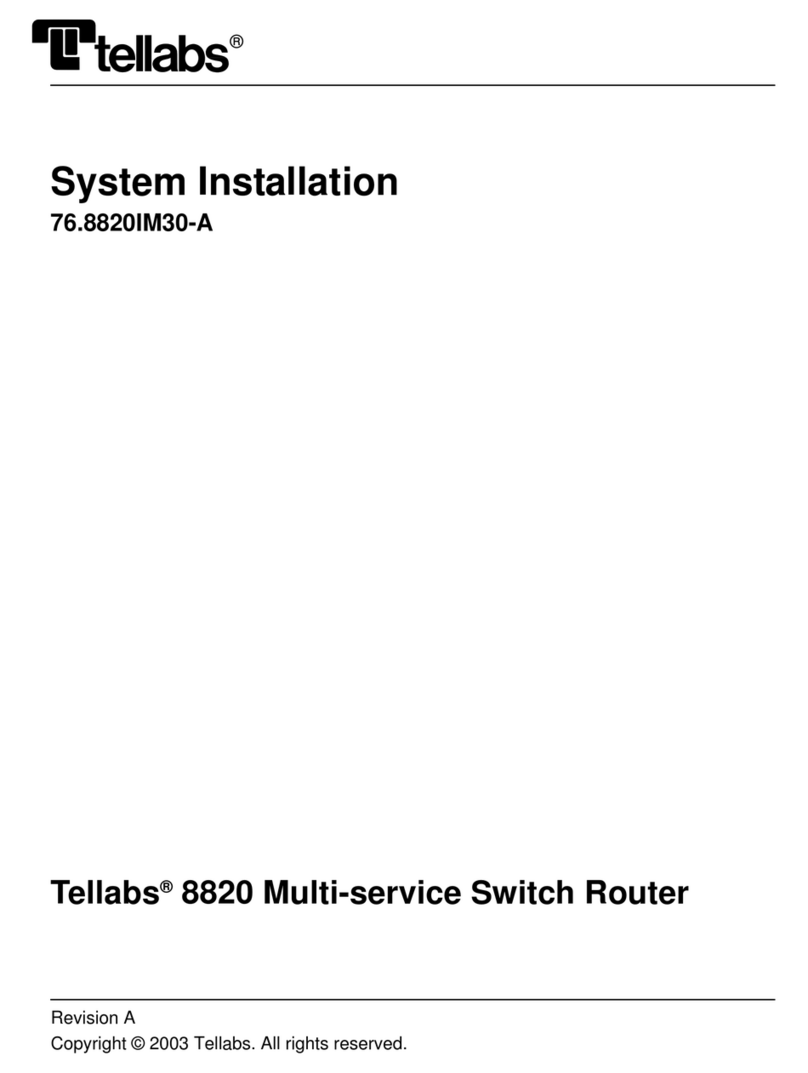
Tellabs
Tellabs 8820 MSR User guide
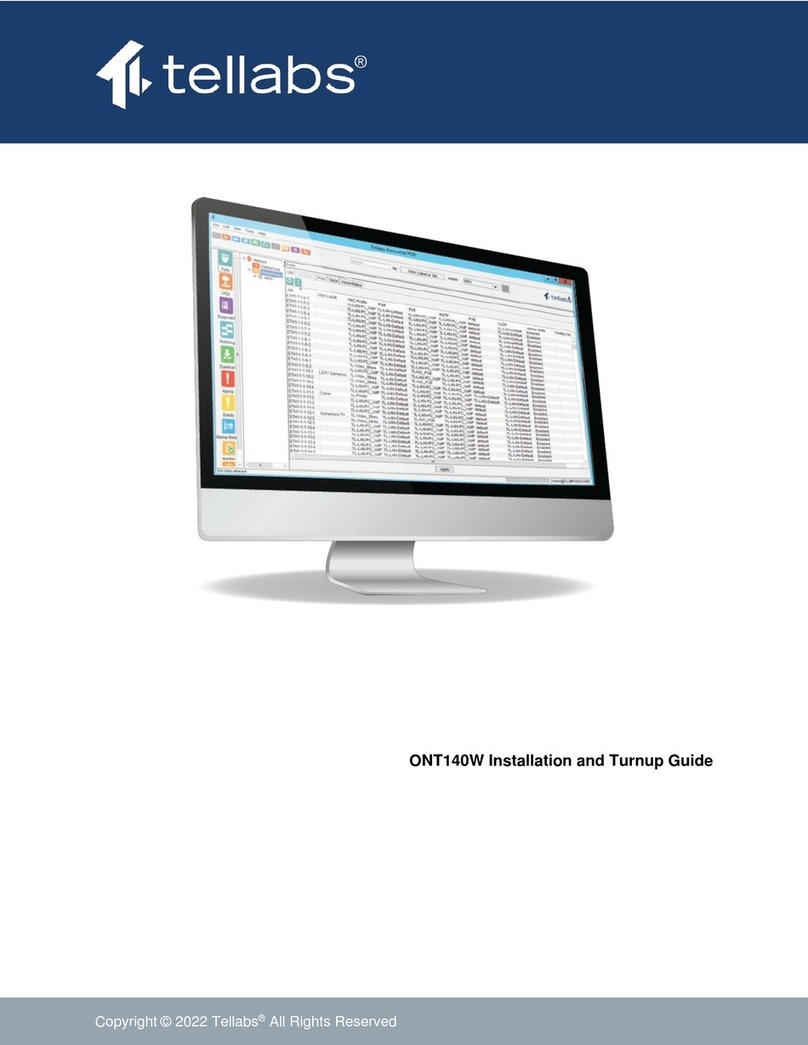
Tellabs
Tellabs 100 Series User manual
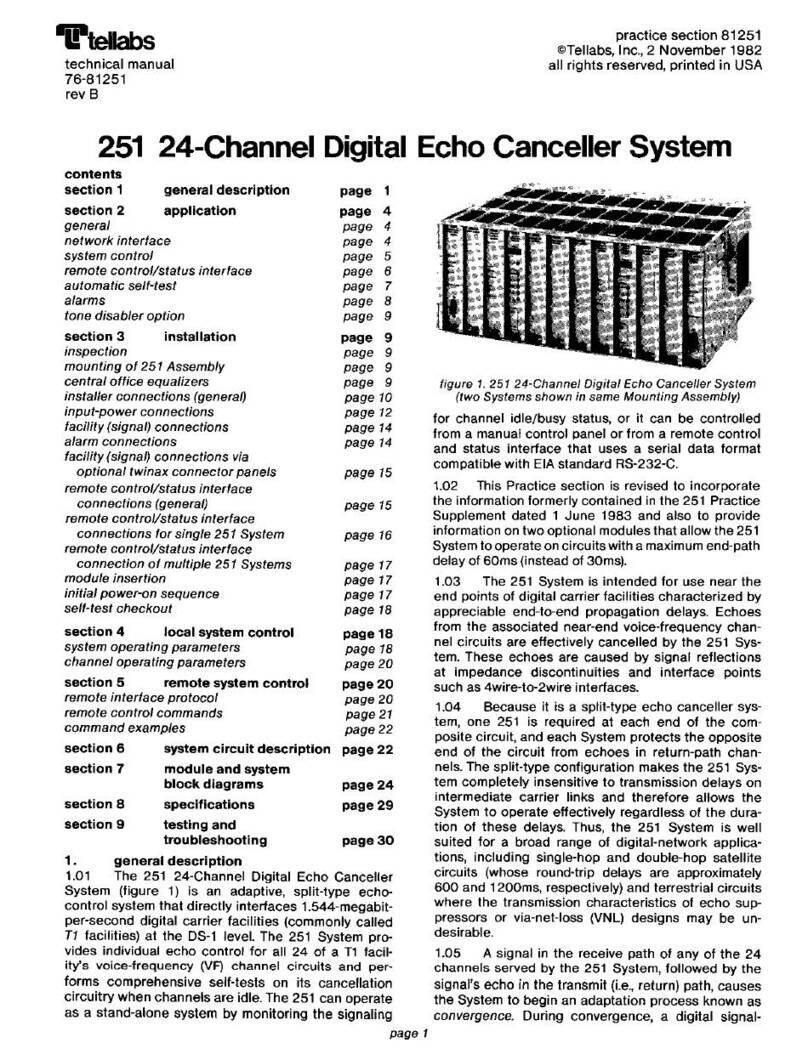
Tellabs
Tellabs 251 User manual
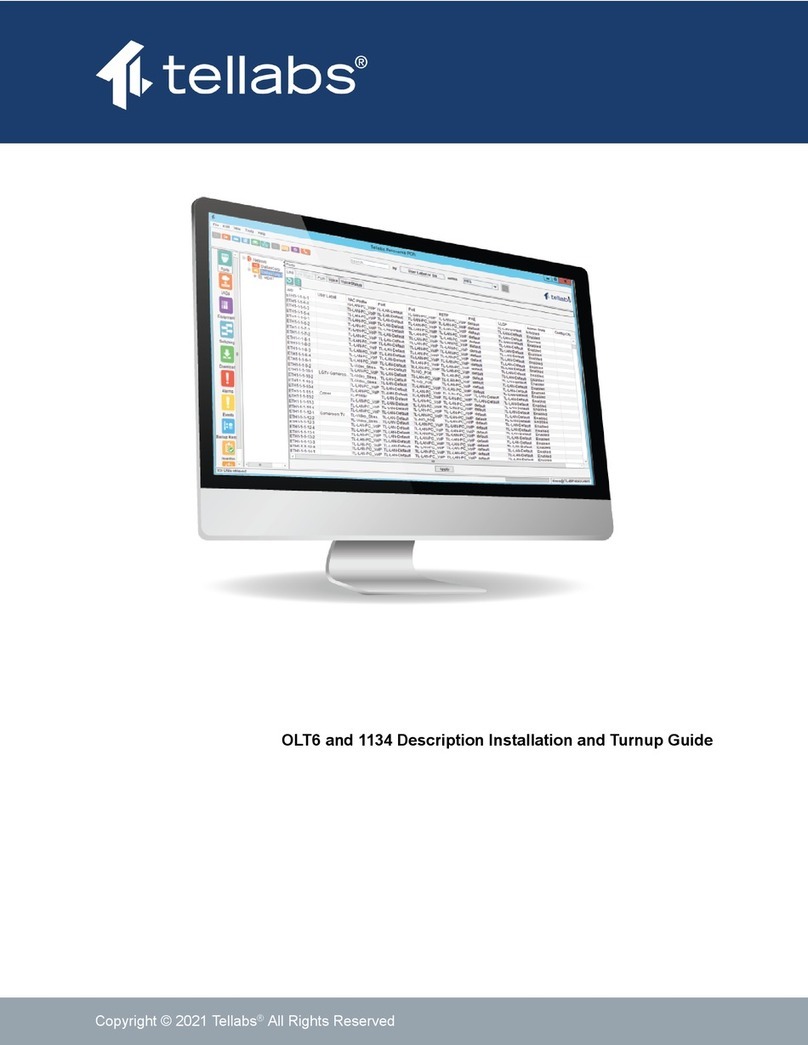
Tellabs
Tellabs FlexSym OLT6 User manual

Tellabs
Tellabs 263DC User manual
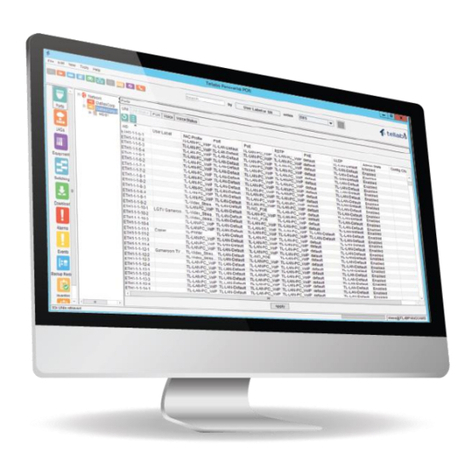
Tellabs
Tellabs FlexSym ONT205 User manual
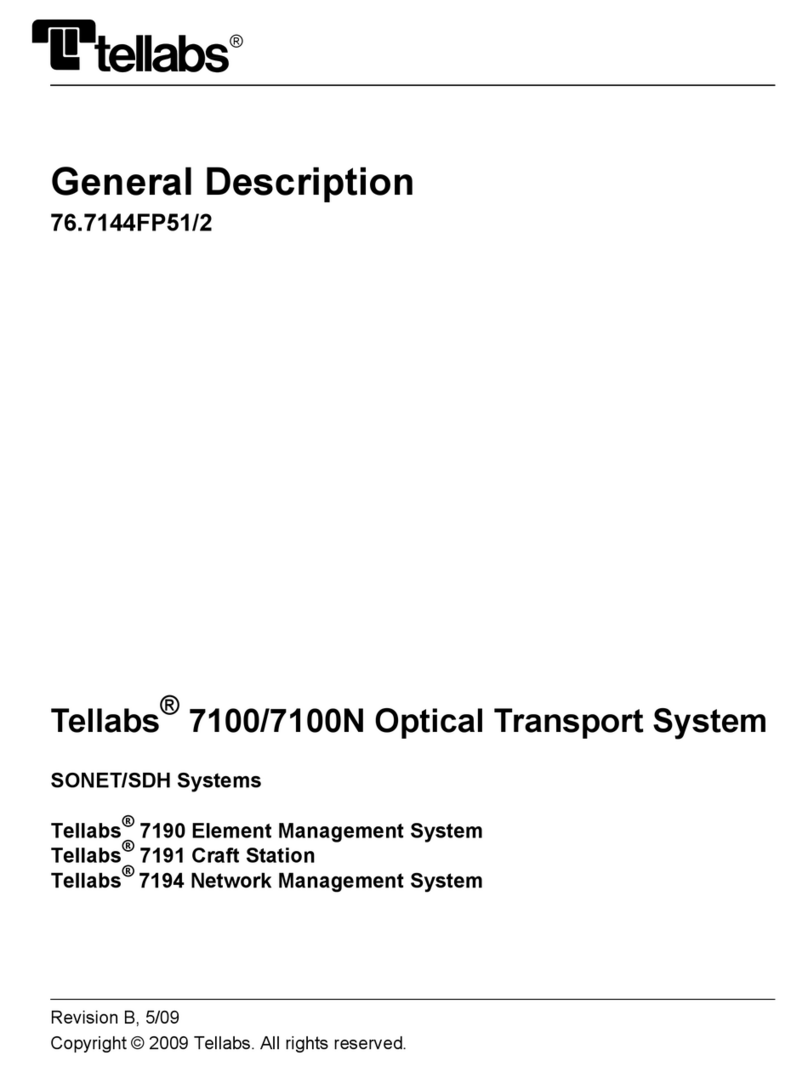
Tellabs
Tellabs 7100 Operating and maintenance instructions
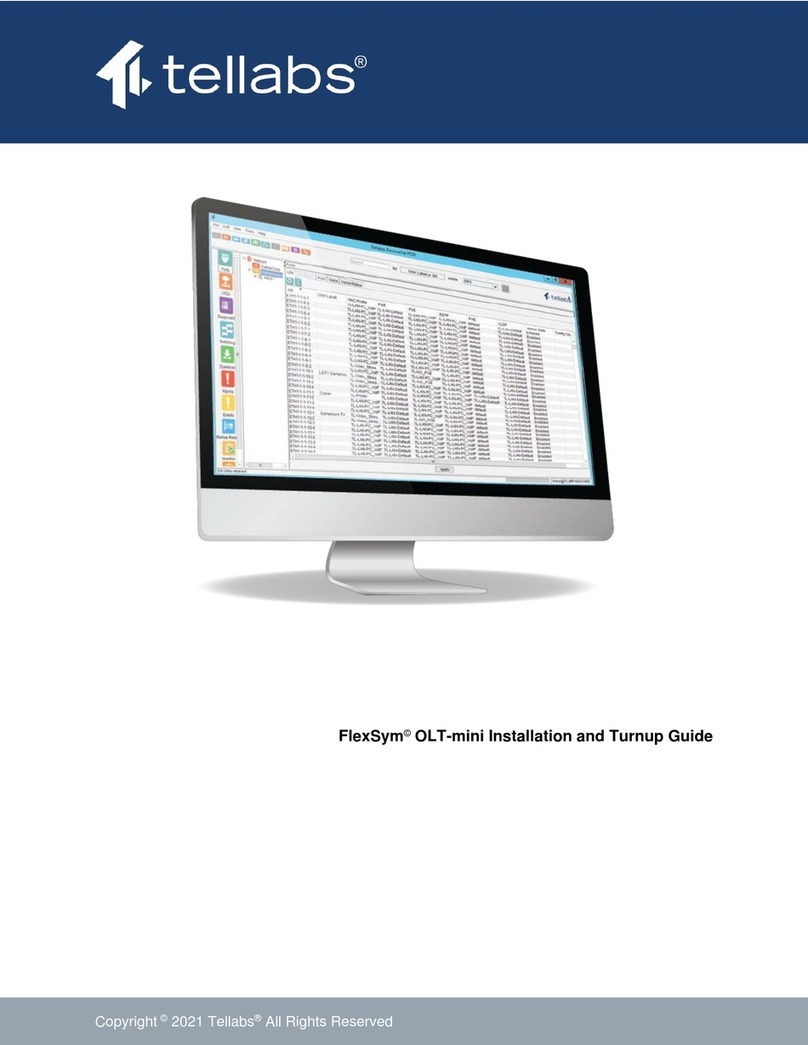
Tellabs
Tellabs FlexSym OLT-mini User manual
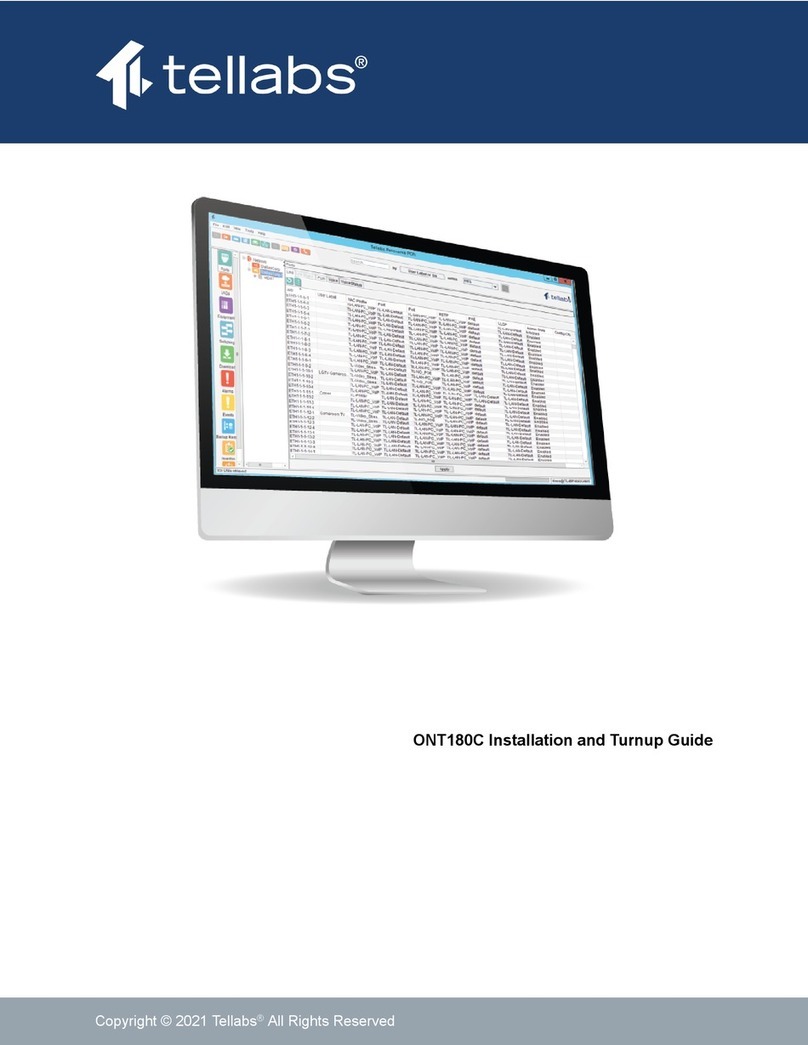
Tellabs
Tellabs ONT180C User manual
